ALIGNING SIMPLIFYING ON-DEMAND
Dell is committed to aligning, simplifying, and moving to an as-a-Service model for its channel partners.



Dell is committed to aligning, simplifying, and moving to an as-a-Service model for its channel partners.


Digital transformation has impacted the go to market of all ICT vendors including some of the largest like Dell Technologies. In this month’s lead feature, Rola Dagher, Global Channel Chief at Dell Technologies, highlights some of the principal initiatives taken by the vendor to meet the expectations of global enterprises while simplifying how channel partners can engage with the vendor.
With one of the broadest technology portfolios in the IT industry, spanning client, infrastructure, cybersecurity, cloud and software, Dell’s reach and relevance in the channel is inescapable. For many partners around the world, Dell is their biggest vendor, writes Canalys in its white paper.
The channel for us is a business that is extremely important says Dagher. She points out, while Dell Technologies can build amazing boxes, it is up to channel partners to deliver as well. Dell Technologies is the enabler, and partners in our channel are the transformers in helping us get there, she says.
An important initiative by Dell Technologies, to make the channel relevant for their customers, is the movement towards as-a-Service, APEX programme. APEX is being positioned as underpinning the new Dell, which will drive re-engineering of the whole organisation, including its ecosystem partnerships. At the same time, Dell is doubling down on key growth opportunities: workplace transformation, edge, IoT, hybrid cloud and infrastructure modernisation.
The panic spending on IT across two years of pandemic is being normalised towards sales and growth numbers that existed prior to the pandemic – normalised to what IT business used to be before the pandemic. I would say, welcome to the year of normalisation, remarks Dagher.
Digital transformation has also brought an added level of complexity into the solution that usually involves more than one channel partner getting involved in the deals. Prior to digital transformation, it was sufficient for one channel partner to manage a volume or value deal. But much of that has changed in today’s transforming world.
Dager says the knowledge transfer, to build on the knowledge base economy here in the region is extremely mature. I see it as a two-way win-win for both and the support that our team is providing the partners and the trust that our partners are putting in us, is something to be proud of.
Also, in this month we take a look at trends across analytics and artificial intelligence. Says Sid Bhatia at Dataiku, AI is a toolbox not silver bullet. Enterprises need to think about the changes they want to see in the business before applying artificial intelligence to those changes.
Recessions are great times to revisit wish lists and weed out the unnecessary in favour of the quick win. Data-science talent is rare and represents a significant portion of the cost of each model. The takeaway here is that data teams do not need to be large to add value. One example of an expensive to-do item is data migration, which drains monetary and human resources.
Turn these pages for more about annual trends and forecasts across the IT industry. Happy reading and learning to all.
ARUN SHANKAR, CHIEF EDITOR

ARUN@GECMEDIAGROUP.COM
PUBLISHER
TUSHAR SAHOO
TUSHAR@GECMEDIAGROUP.COM
CHIEF EDITOR
ARUN SHANKAR
ARUN@GECMEDIAGROUP.COM
CO-FOUNDER & CEO
RONAK SAMANTARAY
RONAK@GECMEDIAGROUP.COM
GLOBAL HEAD, CONTENT AND STRATEGIC ALLIANCES
ANUSHREE DIXIT
ANUSHREE@GECMEDIAGROUP.COM
GROUP SALES HEAD RICHA S RICHA@GECMEDIAGROUP.COM
PROJECT LEAD
JENNEFER LORRAINE MENDOZA JENNEFER@GECMEDIAGROUP.COM
SALES AND ADVERTISING
RONAK SAMANTARAY
RONAK@GECMEDIAGROUP.COM
PH: + 971 555 120 490
DIGITAL TEAM
IT MANAGER
VIJAY BAKSHI
PRODUCTION, CIRCULATION, SUBSCRIPTIONS INFO@GECMEDIAGROUP.COM
CREATIVE LEAD
AJAY ARYA
GRAPHIC DESIGNER
RAHUL ARYA
DESIGNED BY
SUBSCRIPTIONS
INFO@GECMEDIAGROUP.COM
PRINTED BY Al Ghurair Printing & Publishing LLC.
Masafi Compound, Satwa, P.O.Box: 5613, Dubai, UAE
Office No #115
First Floor , G2 Building
Dubai Production City Dubai
United Arab Emirates Phone : +971 4 564 8684
31 FOXTAIL LAN, MONMOUTH JUNCTION, NJ - 08852 UNITED STATES OF AMERICA
PHONE NO: + 1 732 794 5918
A PUBLICATION LICENSED BY International Media Production Zone, Dubai, UAE @copyright 2013 Accent Infomedia. All rights reserved. while the publishers have made every effort to ensure the accuracyof all information in this magazine, they will not be held responsible for any errors therein.









Without ongoing training, knowledge testing and awareness, staff behaviour is one of the biggest cybersecurity risks that organisations face.
CSOs, CIOs and CISOs have never had it so tough. Alongside their traditional responsibilities, they must now face a cybersecurity threat environment that is growing exponentially, and a growing cyberskills gap. As a result, many of them are reporting burnout.

As per the findings of the 2022 IBM Security X-Force Threat Intelligence Index, the Middle East and Africa region was ranked fourth worldwide for the most ransomware attacks.

According to a report by Group-IB, between Q1 2021 and Q1 2022, the data belonging to 147 companies from the MEA region was uploaded on ransomware dedicated leak sites. And this is only one of the many threats that organisations have to deal with.
There are also distributed denial of service, DDoS attacks, Man in the Middle attacks, social engineering, insider threats, malware, and advanced persistent threats to contend with – and those are just the most common network security threats.
The problem for CSOs is that, while most employees have some basic knowledge of cybersecurity best practices, that is pretty much all they have. Without ongoing training, knowledge testing and awareness, staff behaviour is one of the biggest cybersecurity risks that organisations face.
A study by Accenture revealed that less than half of new employees receive cybersecurity training and regular updates throughout their career. Just four in ten respondents said insider threat programs were a high priority.
Organisations must look to create a robust and distributed digital immune system with a radical re-engineering of staff behaviour. Business leaders need to have accountability for cybersecurity; security teams need to collaborate with business leaders to create and implement policies that will actually work, and those policies need to be routinely re-evaluated and tested.



A security-first culture requires that all members of the culture appreciate the concept of network security threats. For this to actually have an impact on culture, however, staff must be trained routinely to ensure that their knowledge is current.
Well-trained staff and a monitored environment are crucial to the successful protection of any organisation but without a foundational Zero Trust environment, defences will be intrinsically weak.
A key part of a disaster recovery plan involves backups. However, it is surprising how often restoring from backup systems in real-world situations do not perform as expected. It is important to know which digital assets are and are not included in backups and how long it will take to
restore content.
CSOs should plan the order in which backed-up resources will be recovered, know what the start-up window will be, and test backups as a routine task with specific validation checks to ensure that a recovery is possible.
The CSO’s job is not getting any easier, but solid planning using the four strategies will help ensure an organisation’s digital safety. In addition, partnering with top-level enterprise cybersecurity vendors will ensure that critical security technology and best practices are central to the organisation’s cybersecurity strategy. ë
Data belonging to 147 companies from the region was uploaded on ransomware dedicated leak sitesADRIAN TAYLOR Regional VP of Sales, A10 Networks.
Next generation HCI architectures could potentially reduce energy consumption and carbon footprint by up to 27% per year.
When it comes to provisioning the IT on which all businesses rely, running costs and energy efficiency have long played a significant role in the decision-making processes. Recently, however, concerns around global warming and soaring energy costs have moved them to the top of the priority list. This, in turn, is causing CIOs across the board to fundamentally rethink the approach they take, particularly when it comes to the datacentre where huge benefits are to be had on both counts.
Estimates vary but according to the International Energy Agency, and others, datacentres and their associated infrastructures account for around 1% of global energy consumption. In EMEA alone that translates to over 90TWh per year, or enough to satisfy the domestic energy needs of a small country. Moreover, this figure carries with it an environmental impact equivalent to running almost 6 million vehicles.
There are lots of ways of tackling this issue with some organisations, for example, abandoning their on-premise datacentres altogether and moving to the cloud. That, however, does not necessarily save on running costs. Indeed, many businesses find it more expensive compared to running an on-premise datacentre, and with none of the budgetary certainty of an on-premise facility. Neither does it address the climate issues. It just makes them somebody else’s problem.
Indeed, that change is already happening with growing numbers moving from traditional 3-tier architectures, servers + storage + networks towards next generation models, in particular hyperconverged infrastructures, which most analysts, agree is the best and most expedient way of reducing datacentre energy consumption and carbon footprint.

The reason for that assertion is down to the way hyperconverged models work by distributing computing power and storage across lowcost commodity hardware platforms, linking them with software and using virtualisation to provide an easily scaled and managed operational whole. A mature technology with a number of different HCI platforms available, here are the expected benefits in terms of energy consumption and climate change of switching from 3-tier to HCI models:
In comparison to traditional 3-tier IT platforms, next generation HCI architectures could potentially reduce energy consumption and carbon footprint by up to 27% per year.
l Across EMEA, HCI transformation has the potential to reduce energy consumption by 56.7 TWh and cut emissions by 14.2 million tonnes of CO2 over the period 2022-2025
l By 2025 a full changeover to HCI across UK datacentres could potentially save 8.1 TWh of energy and 1.8 million tonnes of CO2, roughly the same as taking 400,000 cars off the road
l By 2025 a full changeover to HCI across datacentres in the Middle East and Africa could potentially save 4 TWh of energy and roughly 2.4 million tonnes of CO2.
Large-scale colocation datacentres offer a much lower Power Usage Effectiveness factor than typical on-premise facilities. Switching these to HCI architectures could potentially boost energy saving towards 30-40%.
It is important to recognise that the datacentre industry has delivered significant energy efficiency improvements over past decades and is now one of the most advanced in terms of both energy efficiency and decarbonisation. That said it remains a major energy consumer and could do a lot better.
Without significant change future energy demand will continue to rise and result in large amounts of carbon dioxide emissions. The answers to all this lie in innovative next generation datacentre technologies, like HCI, which have been proven to work and which have the potential to deliver considerable efficiency gains with a significant impact on energy cost and climate change. ë
AHMED RASHAD Senior System Engineer, Nutanix.
Intersec, the world’s leading trade fair for safety, security, and fire protection, recorded its biggest visitor turnout when it wrapped up a three-day run at the Dubai World Trade Centre in January.


Some 43,305 industry professionals from 131 countries attended the event’s 24th edition, the largest in the series’ history with over 800 exhibitors from 55 countries spread across nine DWTC halls and the Trade Centre Arena.
The visitor turnout saw a significant uptick in international visitors, with attendees from the GCC, Europe, Asia, and the Americas accounting for 49% of the total headcount. Footfall meanwhile was spread across 48,331 gross square-metres of dedicated showcases for commercial and perimeter security, homeland security, fire and rescue, safety and health, and cybersecurity.
A new report from PriceWaterhouseCoopers, produced in partnership with Intersec, found that the wider sector is treading a new pathway to cognitive security and surveillance, which will see the system evolve with active involvement from customers alongside their OEMs of choice to
drive client-centric development.
With emerging technologies playing a leading role in driving change across the ecosystem, the success and future of the security and surveillance industry lie in moving from an industry-driven strategy to a customer-focused strategy.
The shift can be enabled by partnership strategies with varying degrees of control and investment to strike a partnership equilibrium. This will require a collective effort throughout the whole ecosystem.
This year’s heightened visitor numbers underline the industry shift to this new era of cognitive security and surveillance likely to dominate the sector going forward.
Partnerships were prominent from the first day at Intersec 2023 with a Memorandum of Understanding being signed between video surveillance provider Hikvision and the UAE’s Ministry of Interior, and Indian satellite, digital cable, and broadband provider NxDigital and US cybersecurity technology company Cybereason.
Technology and innovation remained front and centre of the event
with the exhibitor profile featuring the biggest industry names alongside sector entrants and innovators. Major new exhibitors included Thales of France, Singapore’s ST Engineering, Saudi Arabia’s SAFE, Germany’s AGMC, BMW, Israel’s D-FEND, the UAE’s Tabbara, Holland’s Robin Radar, Sigma Security of Greece, Poland’s Megavision, and VX Ray of the USA.
The Attack Zone hosted by the Loss Prevention Certification Board saw exhibitors live demo their products, while there was also a Safety Walk protective gear showcase sponsored by EnSafe Evacuation Chair, Jutec, and Teijin.
A technology stage featured VR solutions, anti-drone technology, and new safety materials; a Start Smart Zone connected start-ups with decision makers, buyers, and investors; and the purpose-built Future Defenders Hack Arena provided a space for cybersecurity teams from schools, universities, and CISOs to compete for prizes and industry recognition.
There were also the Intersec 2023 conference and knowledge-sharing programme – the biggest yet in the series with four focussed streams including the highlevel Security Leaders’ Summit. The UAE Cybersecurity Council hosted a conference with attendees ranging from government leaders to CSOs and CISOs across the oil and gas industry, BFSI, healthcare and hospitality, and energy and utilities.
A dedicated Fire and Rescue Conference was also hosted by Dubai Civil Defence, while a highly focussed Safety and Health Seminar explored the new MENA regulatory changes.

Additionally, Intersec 2023 recognised the best of

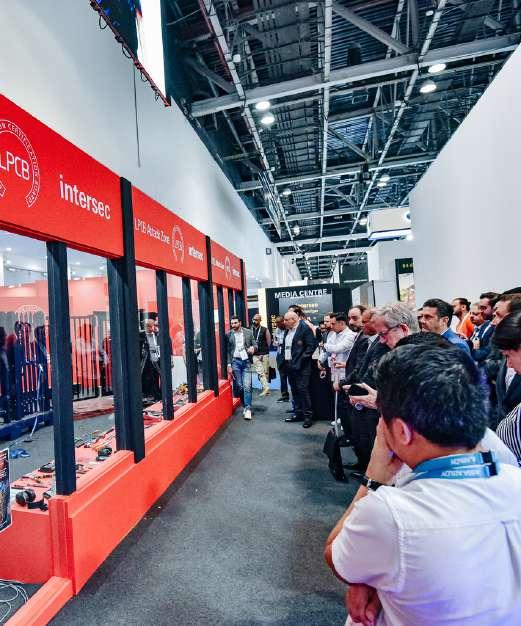
the security and safety industries through its awards programme, with winners being presented at a gala ceremony. The show also hosted a successful bid by the UAE’s Cyber Security Council to achieve the first Guinness World Records title for the largest cyber drill competition.
The Guinness World Records team had set a requirement for 100 participants for the inaugural record attempt, which the CSC surpassed with 150 participants across three days. An official adjudicator was on site to review the record bid and present a certificate to His Excellency Dr Mohamed Al Kuwaiti, Head of Cyber Security for the UAE Government.


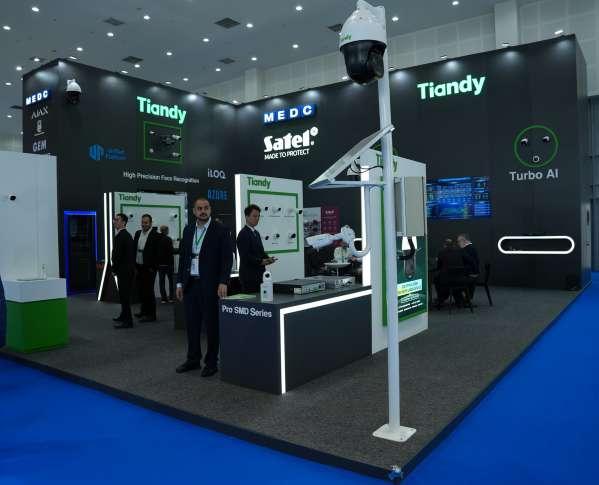






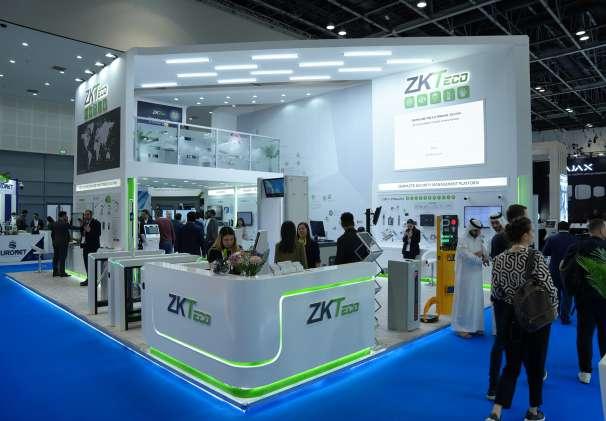



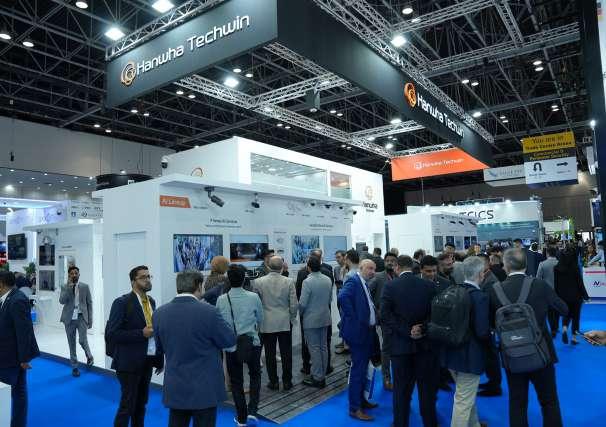

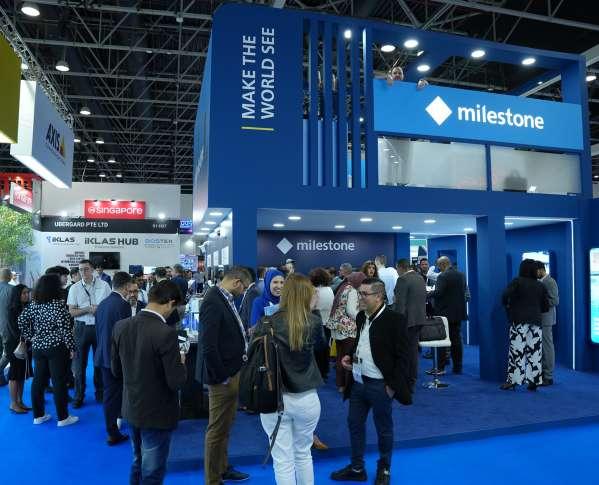








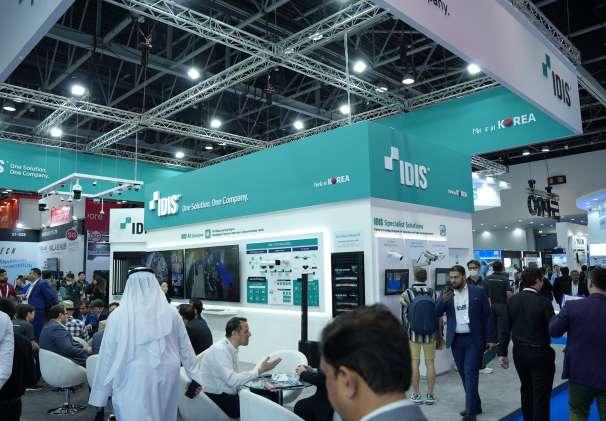

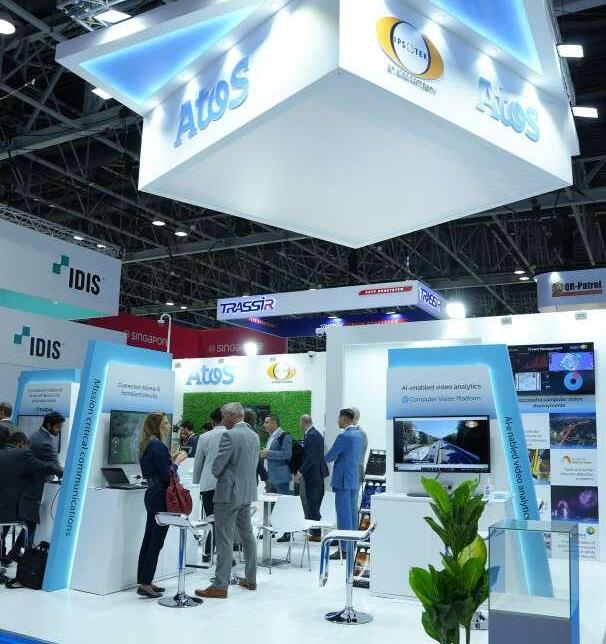

head office in Dubai in the presence of Khansaheb Industries’ Managing Director, Abdulrahman A. Khansaheb; and LG Gulf Electronics Chief Executive Officer, Michael Park.
The agreement will see Khansaheb Industries promote and sell LG’s wide diversity of HVAC products. Those include units with variable refrigerant flow, direct expansion, air handling units, and chillers. Khansaheb offers a wide diversity of progressive HVAC solutions, which include Spiralite, the world’s first, patented, circular and flat oval insulated AC air duct that is energy efficient and lightweight, while also being robust, with optimal airflow and thermal performance.
Khansaheb Industries, part of Khansaheb Group, signed a distribution agreement with LG Gulf Electronics, part of LG Electronics Global, a world leading consumer electronics brand. The agreement will see Khansaheb

Industries promote and sell LG heating, ventilation, and air conditioning products to the UAE market, providing greater product diversity to UAE consumers and businesses.
The partnership was signed at Khansaheb’s
EDGE Group entity, BEACON RED, an advanced solutions provider that focuses on tackling complex national security challenges, is proud to be certified by Great Place to Work for the second year in a row. The prestigious award is based entirely on what current employees say about their experience working at BEACON RED. This year, 93% of employees voted that BEACON RED is a Great Place to Work.
BEACON RED benchmarks itself against leading global companies, and prides itself on developing a high-performance culture, embracing diversity, and working as one team to tackle the most complex security challenges. With more than 272 employees from 31 countries, BEACON RED attracts the world’s most elite national security professionals and skilled personnel from various fields and domains.
In a recent survey conducted by Great Place to Work, BEACON RED ranks sixth in the top 10 best workplaces for parents in the UAE amongst organisations in many different fields. With a philosophy based on mutual trust and understanding, BEACON RED offers flexible work schedules which ensure employees can meet their individual needs.
The partnership between Khansaheb Industries and LG will deliver highly efficient and sustainable cooling solutions that provide customers with the highest indoor air quality and optimal AC performance at the lowest operating cost. Khansaheb Industries and LG Electronics also both focus on ensuring reliable on-time delivery and continuous optimisation of their products and services.
 (Left to right) Abdulrahman A. Khansaheb, Managing Director, Khansaheb Industries and Michael Park, Chief Executive Officer, LG Gulf Electronics.
(Left to right) Abdulrahman A. Khansaheb, Managing Director, Khansaheb Industries and Michael Park, Chief Executive Officer, LG Gulf Electronics.
carbon neutral solutions while also enabling adaptation and resiliency.
The AI Centre of Excellence will also work to improve NLP for Arabic dialects, making AI more accessible and flexible for Arabic speakers. Improving NLP capabilities in Arabic dialects will help to address civic, social, and business challenges, while providing real-life applications such as personalised customer care, AI-powered assistants, improved search, and fraud detection, to name a few.
Mohamed bin Zayed University of Artificial Intelligence in collaboration with IBM formally launched an AI Centre of Excellence as part of Abu Dhabi Sustainability Week’s World Future Energy Summit. The Centre aims to advance collaboration to improve the adoption of AI technology and help drive sustainability. The Centre will develop carbon neutral solutions to existing energy supplies, combat climate change, and further natural language processing
for Arabic dialects.
Experts from IBM and MBZUAI plan to focus on decarbonisation, with advanced research into climate change mitigation and adaptation. Joint research teams will work on the development of foundational AI models, which could help inform the deployment of clean and renewable energy in the electrification of multiple sectors across the economy. This approach will set the stage for use of

The deployment and use of clean energy solutions is one of the main pillars of the UAE’s model of addressing the challenge of climate change and reducing GHG emissions, in line with UAE Net Zero 2050 strategic initiative. The AI Centre of Excellence plans to leverage the talents of IBM researchers with expertise in data science, machine learning and NLP, in collaboration with MBZUAI faculty and students. The teams will work together towards the advancement of both fundamental and applied research objectives.
SentinelOne, an autonomous cybersecurity platform company, announced it has enhanced its regional commitment, with the inauguration of a new office in Dubai. The new facility serves as the regional hub for SentinelOne’s Middle East, Turkey and Africa operations, as it continues expanding into new markets and secures new and existing customers against constantly evolving cybersecurity threats.

The new office, located in Al Thuraya 1 in Dubai Internet City, serves a number of functions including acting as an environment for the brand to showcase its cutting-edge cybersecurity solutions and technology, while also enabling its regional partners and their customers to directly engage with SentinelOne’s cybersecurity experts. The office also houses the brand’s regional sales and marketing teams who are tasked with driving consistent engagement with channel partners and customers.
As businesses in the region increasingly
Tamer Odeh, Regional Sales Director, SentinelOne inaugurates the new Dubai office.
look to digital transformation to better serve customers, find new efficiencies and boost profitability, they also become potential targets by global threat actors. Meeting these threats head-on calls for the deployment of cutting-
edge solutions such as the Singularity XDR Platform and Singularity Identity solutions, both of which have proven track records of securing organisations regardless of where they are in their digital transformation journeys.
ServiceNow announced a major partner programme transformation to further partner growth and customer success. The multi-year vision is designed to support the $500 billion market opportunity for the Now Platform and associated partner services with a redesign of the company’s partner programme that includes a new Partner Development Fund among other incentives and benefits.
ServiceNow’s expansive partner ecosystem is critical to helping joint customers realise the full value of the Now Platform. To help partners meet this demand, ServiceNow is investing in new initiatives to facilitate and expand partners’ expertise, differentiate their skills, and maximise their unique contributions.
Key elements of the new ServiceNow Partner Programme include:
l More flexibility to create value: ServiceNow is creating four new, distinct modules in which partners can choose to participate: Build, Consulting & Implementation, Resale, and Service Provider. Through these modules, partners will be able to better align with the unique roles and routes-to-market within the ServiceNow ecosystem.
Erica Volini, senior vice president of alliances and channel ecosystem, ServiceNow.l New incentives to enable partner growth: ServiceNow is unveiling new partner incentives to maximise their investments and foster additional opportunities to demonstrate expertise and capabilities. All qualifying partners will now have access to a new Partner Development Fund, a cofunded investment programme, as well as
simplified discounts and rebates that will help to speed up growth and profitability.
l Transforming the partner experience: ServiceNow is rolling out an updated partner experience and benefits tied to different partner modules and the unique contributions partners bring to the ecosystem. Key experience enhancements include: an improved partner portal making it easier for partners to work directly with ServiceNow, and an improved “partner finder” enabling customers to find the right partner to best suit their business needs by region, industry, or domain expertise.
The new ServiceNow Partner Programme will be available for all partners beginning March 6, 2023.
The elements of the Partner Programme were developed taking into account feedback from existing partners, who have already expressed their support for the transformation:
As part of the programme evolution, Erica Volini will succeed David Parsons, who has led the ServiceNow alliances and channel ecosystem organisation since 2018. Under his leadership, Parsons established ServiceNow’s global partner ecosystem as a source of unique differentiation and competitive advantage.


PROVEN Arabia, one of the leading business outsourcing organisations in Saudi Arabia, announced it has signed a Memorandum of Understanding with Sa3ee, a non-profit organisation for rehabilitation and employment for citizens with disabilities.
The objective of the MoU is to enrich employment opportunities for people with special needs inside Saudi Arabia. The MoU was signed by Zaid Al Mashari, CEO of PROVEN Arabia, and Representatives of Sa3ee at PROVEN Arabia’s headquarters in Riyadh.
Sa3ee seeks to strengthen community awareness of the functional rights of persons with disabilities by providing rehabilitation, professional services, and job opportunities in various sectors.
(Left to right) Zaid Al Mashari, CEO of PROVEN Arabia and Marzouk Alotaibi, Chairman of the board of Directors of the Sa3ee Foundation signing the MoU.The regional headquarters will also provide a focal point to help broaden PowerSchool’s channel partnerships across dozens of strategic countries across the MEA footprint.
Amid the increased adoption of advanced ed-tech solutions in the UAE and wider region, PowerSchool’s innovative solutions empower educators, students and parents to fulfil their potential utilizing cutting-edge technologies. With over 25 years’ experience in the ed-tech domain, PowerSchool solutions provide realtime insight and visibility to both educators and parents, and enable seamless communication and collaboration proven to boost productivity, reduce operational costs, and ultimately improve student outcomes.
PowerSchool, a provider of cloud-based software for K-12 education in North America, has outlined plans to accelerate its international expansion by opening a Middle East and Africa office in Dubai. PowerSchool’s first office in the Middle East will serve the education technology provider’s extensive network of

existing MEA region customers, including Al Ittihad National Private Schools, Liwa Education, Aldar Education, ESOL and the American School Abu Dhabi, lead customer efforts in target territories, and support the company’s expanding customer relationships in surrounding markets.
With over 15,000 customers across over 90 countries worldwide, PowerSchool solutions cover the full cycle of school operations, from managing schools’ administrative operations such as recruitment, human resource management and finance, to student operations including enrolment, communication, data and insights analysis.

UST has been named a Microsoft Azure, Expert Managed Service Provider. This achievement from Microsoft is the latest in a long line of recognitions that UST has earned from partners for its commitment to industry-leading performance and service. Microsoft presents Azure Expert MSP designation to partners in recognition of their commitment to creating dynamic, user-friendly Azure solutions.
To earn this designation, Microsoft partners undergo a thorough auditing process ensuring they demonstrate industry-leading technical capabilities and offer comprehensive end-toend support across Azure environments.
Azure Expert MSP is awarded only to the most capable and high-fidelity Azure Managed Service Providers. Microsoft ensures that all Azure Expert MSPs have consistently demonstrated their ability to meet user needs on everything from mission-critical apps to entire datacentre footprints or hybrid environments.

end planning, inventory management, supply chain network strategy, pricing, and promotion optimisation. The joint efforts will also offer an integrated solution to make smarter inventory & fulfilment decisions, which will result in improved gross margins from 9-12% annually.
The partnership will bring together Tech Mahindra’s expertise in Retail & Consumer Goods, RCG and Digital Services with Retalon’s Artificial Intelligence, AI and Predictive Analytics tools to provide superior customer experiences.
Tech Mahindra announced a global strategic partnership with Retalon, a leader in retail AI and predictive analytics solutions. The partnership will enable Retail and CPG organisations to gain better customer insights, improve
decision-making, and enhance operational efficiency.
Tech Mahindra and Retalon will offer a unified common analytic platform to help enterprises unlock significant value in end-to-
This strategic partnership will further strengthen Tech Mahindra’s market position and expand its global retail portfolio to cater to the evolving and dynamic needs of its customers. The partnership also underlines the company’s focus on digital growth under the NXT.NOW™ framework, which is focused on leveraging next-generation technologies to deliver disruptive solutions today and further enable digital transformation.
Turtlefin, India’s leading Insurtech platform announced partnership with Compass Insurance Brokers, one of the biggest financial solution providers in the UAE, to create a unified and seamless platform to enhance their distribution capabilities in UAE markets. Through this partnership, Turtlefin will enable Compass’s distribution teams to access the required information seamlessly and customise proposals for clients.

Turtlefin will provide access to its extensive, technology-driven solutions to become more efficient and provide cost-effective solutions. This will help in reducing proposal creation time by more than 50% and increase the sales efficiency by 30% along with better customer experience.
Turtlefin will enable Compass’s vast distribution network to access all retail insurance products on its platform. Additionally, Turtlefin is also looking at providing its capability of digital prospecting and E-skilling with a vision to support and empower its network of advi-
sors. This will strengthen the engagement of Compass Advisors with their customers and empower them with necessary tools to cater to their customer’s insurance needs.
Turtlefin’s platform provides end-to-end transaction capabilities on a selected range of insurance products for advisors. It is also working with some leading financial institutions in the India and UAE, to create a unified and seamless platform for the bank’s insurance cus-
tomers. By equipping advisers with the proper set of tools that can assist them in directing customers toward the most suitable insurance options, Turtlefin’s services comprehensively meet the requirements of the new regulations in the UAE. Its offerings holistically meet the demands of the new regulations by empowering advisors with the right set of tools that can help them guide clients towards the most suitable insurance solutions.
Citi Bahrain has celebrated the first anniversary of its Global Technology Hub, which is on track to employ 1,000 Bahraini coders over ten years. Currently, the hub comprises of 110 Bahraini employees, out of which 91 Bahrainis have started at the Citi Seef premises, with 19 additional hires set to join soon. Female participants at the Hub make up 22% of the total Bahrainis, outperforming the average of females in other Citi tech hubs around the world.

When selecting a country for its Global Technology Hub, Citi conducted a rigorous technical coding test and interview process, with Bahraini talent showing the highest pass rate when compared to other regions. Even more encouraging was the level of female talent in Bahrain’s candidate pool, as Bahrain ranks first globally in multiple subindices according to Meta’s Inclusive Internet Index, 2022, including female digital skills training and STEM education, open data policies, and privacy regulations.
Citi launched its Global Tech Hub last year as part of a strategic
partnership between Tamkeen, Bahrain’s labour fund, and the Bahrain Economic Development Board, the Kingdom’s investment promotion agency. A first in the region, the Hub aims to develop and improve digital solutions for Citi’s regional and global clients while creating 1000 tech jobs for Bahrainis over ten years.
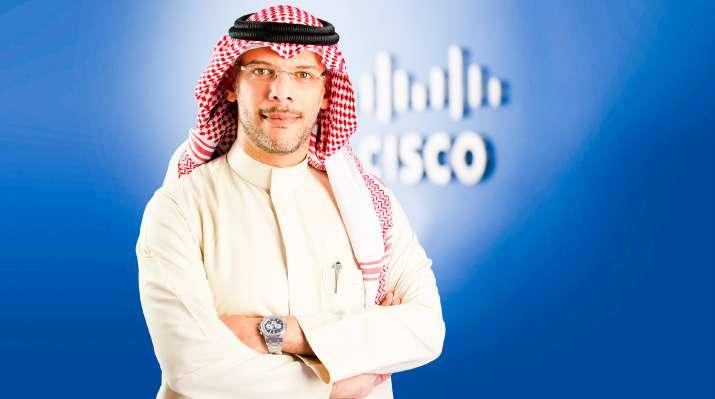
Since the establishment of Cisco Networking Academy in Saudi Arabia in 2000, more than 274,500 students have been trained and upskilled via the programme. 34% of these learners are female, making the Kingdom one of the top 20 countries worldwide with female participation.
During Cisco’s 2022 fiscal year alone, more than 64,000 students were enrolled in Cisco Networking Academy courses in Saudi Arabia. These learners were supported by more than 470 instructors, working across 120 academies in the Kingdom.
Earlier this quarter, Cisco has announced its goal to provide digital skills training to 25 million learners globally over the next ten years through its Cisco Networking Academy programme. By 2025, 97 million new jobs are expected to be created worldwide due to advances in technology and automation, and Cisco is helping millions of people around the globe gain access to these expected jobs by empowering the workforce of the future with education and career opportunities through its Networking Academy.
Founded in 1997, Cisco Networking Academy is celebrating its 25th anniversary and
continues to be one of the longest-standing IT skills-to-jobs programme in the world. Cisco Networking Academy provides high-quality IT courses, learning simulators, and hands-on learning opportunities via a learning platform to support instructors and engage learners in 190 countries.
To date, over 17.5 million global learners have taken Cisco Networking Academy courses to gain digital skills. Additionally, 95% of students that have taken Cisco certification have helped the students in obtaining a job or an education opportunity in a field of their interest.
Salman Faqeeh, Managing Director, Cisco, Saudi Arabia.
ASBIS Middle East organised a partner training to drive Seagate’s “Enabling the Modern Data Economy”. For over 40 years, Seagate has been offering the most innovative and easily integrated data storage services built on trust, affordability, and ease. The partner training’s key message was to help customers better understand Seagate’s solutions to overcome the data management challenges, while reducing the complexity and expense of managing the infrastructure behind it.
The training session was held together with an Outdoor Karting experience on the state-of-the-art facility at the Dubai Motorcity. Those who were up for the challenge were able to experience the 1.2km International Circuit at the Dubai Kartdrome that features 17 corners to test the driver’s skills, as well as a tunnel and bridge to increase the excitement.
This training was delivered as part of ASBIS Channel Partner Enablement Programme and aimed to empower new and existing Seagate Partners, with the objective to improve their sales and presales capabilities and overall business support. Furthermore,
this training enabled partners to be more competent on right product positioning, to sharpen their solution selling skills and to offer customers a complete Modern Data Experience.

Omnix, an end-to-end digital solutions and services pioneer, announced that it is organising a multi-city summit, which will focus on the enhancement of the Digital Maturity Index in the architectural, engineering and construction industry. The Omnix Digital Summit 2023 will present the latest research, trends and best practices relating to the AEC industry’s DMI and will generate though-provoking conversations and fresh approaches to tackle challenging issues.
The UAE event is proudly supported by PNY and NVIDIA, IMSCAD, SAFEUEM and BLUEBEAM, while the Saudi event is being organised with the support of PNY and NVIDIA, IMSCAD and SAFEUEM.
Industry 4.0 digital transformation is beginning to pervade the built environment in the region, and can offer significant benefits when implemented and used correctly. Integrating new technologies and processes is a big step for most companies, which is why some organisations are more open and prepared for the transformation than others. This is why Digital Maturity Index, DMI is crucial – it is a standardised method of measuring a company’s readiness to take on digital transformation.
The Omnix Digital Summit will bring together several recognised regional veterans to participate in insightful panel discussions including Mahmoud Adly, BIM Administrator at Abu Dhabi City Municipality; Prakash Senghani, CEO and Co-Founder of Navatech Group as event chair; Evgenia Maksimova
Manager, Cloud Sales at EMEA Emerging and Sorin Bularca- Technical Sales Specialist AEC at Autodesk; Muhammad El Kaloush, Senior Channel Manager UKI for the Middle East and Africa at Bluebeam, Ahmed Khalil, Regional Director EMEA from SAEFUEM and many others.
Simran Bagga, Vice President, Omnix Engineering and Foundation Technologies.IBM announced IBM Partner Plus, a new programme that reimagines how IBM engages with its business partners through unprecedented access to IBM resources, incentives, and tailored support to deepen their technical expertise and help speed time to market. The programme is designed to fuel growth for new and existing partners, including resellers, hyperscalers, technology providers, independent software vendors and systems integrators, by putting them in control of their earning potential.
IBM Partner Plus is central to the company’s Hybrid Cloud and AI strategy and aims to empower partners to help clients automate, secure, and modernise their businesses.
IBM Partner Plus offers partners a transparent, simple, and modern experience. By growing technical expertise and demonstrating sales success, participants can progress to three tiers – Silver, Gold, and Platinum – which unlock specialised financial, go-to-market support and education benefits. In the new programme, badging will become the standardised measure of skills and validated solutions will demonstrate expertise.
The enhanced IBM Partner Portal consolidates and tracks all expertise, revenue, and deals globally, offering each partner a clear line-of-site into their progression through the programme.
IBM Partner Plus results from the company’s journey to put partners at the centre of IBM’s go-to-market strategy and act as a growth engine to help capture the $1 trillion hybrid
cloud and AI market opportunities. IBM has invested in elevating the role of partners and accelerating partner-led sales by enabling the ecosystem to become a preferred route to market, offering clients an optimal mix of technology, services, and consulting expertise.
To drive continued growth, IBM will increase its capacity to support partners by doubling the number of partner-facing brand and technical specialists to help them prospect and win additional client business.
Partners can advance through tiers to unlock benefits and demand generation programs which could offer them up to a threefold increase in total investment from IBM. The IBM Partner Portal gives partners real-time visibility into the incentives they are eligible for, predictability into potential earnings, and includes an automated deal share engine that helps them surface quality leads. This has improved deal registration and introduced partners to more than 7,000 potential deals valued at over half a billion dollars globally. IBM investments in comarketing campaigns and co-sell support with partners can also help bring solutions to market and generate demand.


Xerox Emirates, has expanded partnership with KOFAX in the UAE. Working with KOFAX, a leading supplier of Intelligent Automation software, Xerox Emirates will provide a stronger value proposition for digital workflows providing customers with intelligent automation to accelerate business transformation.
partnership will further enable Xerox Emirates to sell, market, deploy, and support Kofax TotalAgility — an intelligent software that automates touchpoints which previously required human intervention. This UAE partnership will help organisations to extend the value of Xerox’s managed print services offering, to enhance their transformation roadmaps.
By collaborating, Xerox Emirates and KOFAX will help customers to transform information and intensive business processes
achieving their digital transformation goals more quickly. By equipping companies of all sizes to meet their document and content management challenges, the new partnership will allow Xerox Emirates to extend its market reach and benefit from incremental revenue streams.
Mutually beneficial to both companies; KOFAX will provide joint customers with software solutions, while Xerox Emirates Digital Services will continue to provide their professional services and resources for implementation, integration in addition to leveraging the existing customer base.
Customers looking for Xerox MPS, ECM, or AI, Data Mining solutions, can now reach out to Xerox Emirates to deliver more services through their strong partnerships and thirdparty solutions.
Zaidoun Arbad, Vice President Partner Ecosystem IBM MEA.
AmiViz, the first B2B enterprise marketplace for the cybersecurity industry in the Middle East, announced that it has been certified as a Great Place to Work after a thorough and independent analysis conducted by Great Place to Work Middle East. This certification is based on direct feedback from employees, provided as part of an extensive and anonymous survey about the workplace experience.
AmiViz has always been a believer in the spirit of people and the company has been able to create a platform that provides them with a flexible working environment where any member of the team can thrive, irrespective of their role in the company. Working with leading global brands and serving international markets, it is important that AmiViz offers a great workplace to all its employees.
Ether Domain Name Services announced that it inked a partnership deal with Alibaba Cloud, the digital technology and intelligence backbone of Alibaba Group, to explore the possibilities of Web3 adoption.
Under the partnership, EDNS, a Web3 pioneer and enthusiast, will work with Alibaba Cloud, Asia Pacific’s leading infrastructure as a service, IaaS provider, to discover the potential of integrating their scalable, high performance and stable infrastructure with blockchain to bring products to Web3 frontiers.

The collaboration between EDNS and Alibaba Cloud was launched at a workshop themed “The Power of Web 3.0” on November 29, 2022, where Joey Lam, EDNS Founder & CEO and Derek Wang, General Manager of Singapore, Alibaba Cloud Intelligence, signed the Memorandum of Understanding, MOU.
 Jason Ou, President of Hisense MEA.
Jason Ou, President of Hisense MEA.
The 2022 Hisense Middle East and Africa Partners Conference successfully concluded in Qatar. Hisense, the multinational home appliance, and consumer electronics manufacturer gathered more than 150 distributors, partners, and top Hisense executives in Doha for its partners meet for the semi-finals of the FIFA World Cup Qatar 2022, of which Hisense is an official sponsor.
Under the theme of ‘Beyond Limits’, the aim of the Hisense MEA Partners Conference was to inspire attendees to achieve further growth and drive Hisense to become market leader in the region’s appliance and electronics retail segment.
At the MEA Conference, Hisense regional leadership including Ismail Al Hurani, COO of Hisense Middle East and North Africa, Luna Nortje, Deputy General Manager of Hisense South Africa, Denis Ostir, Senior Director of VIDAA International, Angela, General Manager HA Product department of Hisense International, Allen Bie, General Manager AC Product department of Hisense International, and Fazalur Rahman, Marketing Director of Hisense Middle East & Africa, took the opportunity to present the next 3 years vision and the blueprint of the strategic approach demonstrating Hisense’s plans to accelerate the growth and momentum for business and brand development. Key growth pillars include product competitiveness achieved through the launch of technology products that will further expand the current product lineup. Hisense will also be focusing on penetrating the market across the MEA region to consolidate market share and fortify dominance in key regions. Lastly, Hisense will continue to build brand equity and raise awareness through various marketing initiatives, along with improving the current business infrastructure, establishing dedicated production bases and research & development centres to expand the service network, and launch additional brand stores across the MEA region over the next three years.
Ilyas Mohamed, COO AmiViz. (Left to right) Joey Lam Tsz Yin, Founder of EDNS Domains; Derek Wang, General Manager of Singapore, Alibaba Cloud Intelligence.HYKE, the app-based digital distribution platform that uses AI to power its operations, has announced the integration of digital payments into its platform. This will allow retailers in the UAE to settle payments through the app with no additional costs, regardless of the number of transactions conducted or the transaction value. This will allow retailers to directly pay HYKE using their Business Bank Accounts, without the need for manual intervention or delays.


The seamless one-time integration and easy-to-use in-app solution is designed to make life easier for retailers who are already using HYKE to manage their Payments.
This new feature is powered by HYKE’s state of the art platform technology with not only makes payment reconciliated fast, easy, and secure for the retailers, but also reduces the friction in the traditional payment collection logistics.
This service is fully compliant with PCI Compliance and regulated by the Central Bank of the UAE. No one can make any transfer except the retailer himself, ensuring that all payments are safe and secure. With this latest update, HYKE is making it even easier for retailers to manage their inventory and get products to market quickly and efficiently.
Digital payments are becoming increasingly popular in the UAE, with many businesses now accepting them as a way to reduce costs and speed up transactions. HYKE’s integration of this payment method will make it even easier for retailers to do business on the platform and provide a better experience for their customers. The integration of digital payments into the HYKE app will greatly reduce the administrative burden on Retailers, who will no longer need to manually process payments or keep track of credits. It will also allow Retailers to make payments at any time and from anywhere, making the whole process more convenient.
CyberKnight, the pioneer of ‘The Art of Cybersecurity Value-AddedDistribution’, announced its financial results for FY2022. In its third year of operation, CyberKnight continued to deliver robust revenue growth, reporting an increase of 95% in bookings over FY2021.
This outstanding performance and accelerated growth for the third consecutive year are attributed to the company’s commitment to execution, paired with ongoing investments in people, product, and process.
CyberKnight’s exceptional momentum is a testament to its 25-market leading Zero Trust Security focused portfolio vendors, deep engagement with more than 400+ partners, trusted advisor relationships with 500+ of the Middle East’s enterprise and government customers, extensive marketing activities and the relentless effort, hard work and dedication of talented teams across the region.
Fahad Al Bannai, CEO of Axiom Telecommunication and HYKE.Cisco
in Saudi Arabia aggregates 34% women participation since 2000
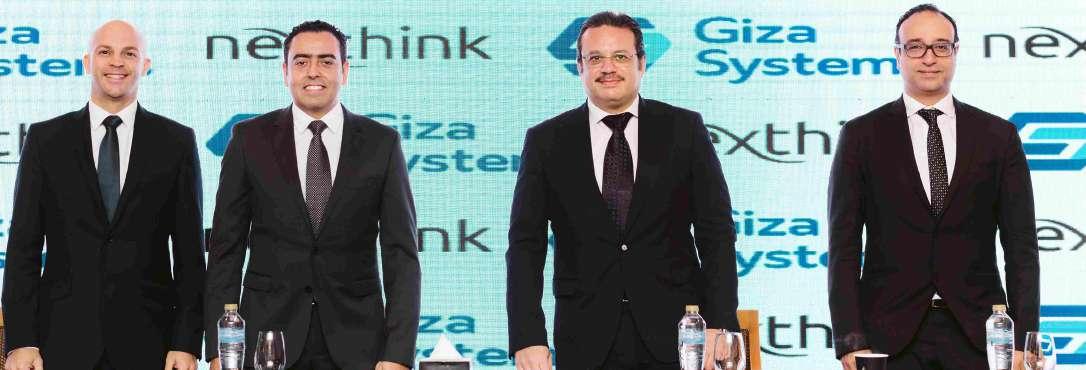
Nexthink, a vendor in digital employee experience management software announced it has partnered with Giza Systems, digital transformation enabler and leading systems integrator in the MEA region; to support joint government and enterprise customers in their digital transformation journey.
This partnership will empower organisations
to accelerate and scale their digital transformation with improved insights on where and how they can improve and offer positive workplace technology experiences, through the lens of the employee. This partnership will also help both companies build new customer relationships, increase revenue opportunities, and offer valueadded services.
Nexthink’s advanced employee experience insights, provides IT admins with a single view, enabling them to proactively or even automatically resolve issues – significantly improving the employee remote work experience. This results in lower IT costs, increased employee productivity, and improvement in the success rate of transformation projects.

Alibaba Cloud announced the launch of Apsara Developer Community, a new hub created to support global developers through an enhanced provision of diverse developer tools and resources. It aims to support the continuous growth of the developer community, while facilitating the further progress of the digital economy across markets.
Unveiled at Alibaba Cloud’s Global Developer Summit at Jakarta, The Apsara Developer Community offers global developer resources and insights into the rising technology trends ranging from Web3, AI to digital intelligence. These resources include access to a slew of new development tools and latest projects, training materials and tutorials, forums and blogs, community events and competitions to showcase their application development, and other upskilling and networking opportunities.
The cloud leader also announced its latest competition, PolarDB Global Hackathon 2023,
to encourage developers to explore cloudnative database innovations. From now until February 28, participants can submit their projects and winners will be awarded with a total of $30,000 in cash prizes.
In addition, Alibaba Cloud also unveiled the Alibaba SMART Scholarship, which aims
to encourage students to join the developer community with cloud-based technologies and become local digital talents. During the first year of this annual scholarship programme, 20 interns from universities will be recruited to join Alibaba Cloud’s local offices to gain more field experience.
investment, Epicor also showcased key customer successes at its Middle East Customer Day with the first regional Customer Excellence Awards, honouring several innovative companies that have driven growth and profitability this past year using Epicor solutions.

Epicor, a global vendor of industry-specific enterprise software to promote business growth, discussed key developments in its Middle East growth strategy at the company’s 2023 Middle East Customer Day on January 17, including plans to launch a new regional datacentre driven by surging customer cloud adoption.
With increased interest and demand in cloud solutions amongst Epicor customers in the
Middle East, the new UAE datacentre — slated to be online Spring 2023 — will help Epicor customers boost performance and speed, as well as improve security. This gives customers using the company’s purpose-built portfolio of solutions — including Epicor Kinetic for manufacturing — a modern, flexible, and scalable technology approach that helps them better compete and grow their businesses.
In addition to highlighting the datacentre
Journey to the Cloud Excellence Award: Al Shawamikh Oil Services was recognised for driving continuous improvements through automation and digitisation of several key operational process to modernise and transform their business. Being early cloud adopters in the region, Al Shawamikh Oil Services migrated from Epicor Kinetic on-premise to SaaS, to enable them to stay current with latest functionality and remain competitive.
Business Transformation Excellence Award: Abu Dhabi Precast transformed their business operations and introduced more transparency with Epicor Kinetic so teams can better track budgets and expenditures at every phase. The data provides visibility and tracking across more than 40 operational initiatives, pivotal in keeping operations and costs in check.
with the aims of Saudi Vision 2030.
To maintain its lead in the market and continue improving its ability to serve customers, SLIC developed a digital transformation strategy called SPARK, which included a plan to simplify its operations, raise efficiency, and capture and analyse valuable data to gain operational and market insights to further improve performance.
Infor, the industry cloud company, announced that Saudi Lime Industries, a Saudi Arabiabased producer and supplier of limestone products, has selected Infor CloudSuite Industrial Enterprise powered by Amazon Web Services, to help simplify and automate its business and processes.
Infor CloudSuite Industrial Enterprise, a
powerful, composable, platform-based ERP solution preconfigured for discrete manufacturers, will boost SLIC’s ability to optimally meet surging demand for its products from sectors including construction, iron & steel, glass production, mining, and agriculture in the Middle East, Africa, and Asia, and support Saudi Arabia’s economic diversification in line

SLIC selected Infor CloudSuite Industrial Enterprise as its ERP solution because it met these needs and more. The solution is preconfigured for SLIC’s industry-specific needs and will help it achieve a shorter implementation and therefore faster time to value by gaining visibility of its business and transform the processes required to quickly respond to customer, supplier and regulatory needs — with no software customisations required.
It also will allow SLIC to integrate with its suppliers, partners and customers, helping it anticipate issues such as supply chain bottlenecks or upcoming changes in demand. These capabilities made it easy for SLIC to select Infor’s ERP solution, which the management team said was a clear choice over the rival solutions they assessed.
Elevatus, the globally renowned recruitment and video interviewing software, announced its local data hosting solution in Saudi Arabia. This gives clients the ability to process and host their data locally while using the Elevatus platform.

Now more than ever, there’s a high demand by organisations to accelerate their cloud adoption. Businesses across the world are striving for innovation, efficiency, and scalability, all while minimising technological risks. Therefore, the ability for Elevatus’ clients to now host their data locally in Saudi Arabia will support their regional growth and offer a faster user experience – especially for the public, telecommunications, healthcare, and financial services sectors. The Saudi Arabia data hosting will also be backed by Elevatus’ world-class customer support team and technological resources.
Headquartered in Riyadh, Elevatus enables enterprises across the globe to streamline their core recruitment functions through
Elevatus is committed to protecting its clients’ privacy by complying with local data security and regulations, as well as offering a safe environment for their cloud-based services.
cutting-edge technology and award-winning recruiting solutions. Allowing them to beat the talent hunt, recruit more talented workforces, secure a paperless recruitment process, and transform their existing tech stack into a unified recruiting powerhouse.
Abu Dhabi SCAD and the Abu Dhabi Department of Energy have signed a service-level agreement that allows collaboration between the two parties in the field of statistical integration as part of a strategy to develop an advanced statistical ecosystem which provides high-quality statistics through a decentralised model.

According to the agreement, SCAD would support DoE in developing its statistical capabilities by applying the best practices and scientific methodologies for data integration through advanced solutions that can eliminate dependency on surveys and opinion polls. The integration is envisaged to optimise the usability of the administrative registers to sustain production of statistics along with saving time and effort.
DoE would be enabled to produce and publish its statistical indicators as per SCAD’s portfolio according to the approved methodologies, standards, and dissemination calendar to produce high-quality statistics in a timely manner.
Under this agreement, the DoE gets access to the SCAD’s Insights and Foresights Platform, IFP, which was launched in October 2021 under the auspices of H.H. Sheikh Khalid bin Mohamed bin Zayed Al Nahyan, Member of
the Abu Dhabi Executive Council and Chairman of the Abu Dhabi Executive Office, ADEO. The platform provides insights, statistical analyses and forecasts that are essential for Abu Dhabi’s development plans and strategies.
The signing of the agreement comes at an important stage in which SCAD is developing
an advanced statistical ecosystem that adopts a decentralised approach to achieve the highest standards of sustainability in the production of statistical indicators and to enable government entities to collect, analyse and publish data to meet the needs of users and support decision-makers.
Nutanix announced that Mohamed Naser Al-Hajery & Sons, one of Kuwait’s largest consumer services group, has leveraged Nutanix to enhance performance and availability of digital services and reduce TCO. Migrating to Nutanix ensures the performance and availability of critical digital applications, while reducing TCO by nearly 50%. Reduced complexity enables the IT team to refocus efforts on high-value initiatives that drive business outcomes.
IT is the enabler of smooth operations of the Group. To ensure the performance and availability of the various critical services and applications, Mohamed Naser Al-Hajery & Sons initially invested in a hyperconverged infrastructure solution. Despite being from a leading vendor, it had several shortcomings that impacted the smooth operations of its various lines of business.

Today, all the Group’s core services, as well as its vertical-specific business applications run on Nutanix and Mohamed Naser AlHajery & Sons has benefitted greatly from the implementation.
Nutanix has untethered Mohamed Naser Al-Hajery & Sons’s IT team from the constraints imposed by the performance limitations of their previous HCI solution. The new implementation has enabled the team to carry out upgrades to the mission-critical
core ERP system and run tremendously resource-hungry workloads with no performance issues at all – something that was not possible with the earlier solution.
With Nutanix deployed in its disaster recovery site, Mohamed Naser AlHajery & Sons now enjoys a near-zero RPO and a significant enhancement to RTO. Previously, a complete restore would take up to 24 hours from the disaster recovery site to the main datacentre. In comparison, Nutanix achieves the same in under 5 minutes.
Learning Platform.
Rajac International School strives to provide the best quality educational experience in order to upbring a generation of youth that is mentally, physically, and socially capable of meeting the challenges of a rapidly changing and highly demanding world.
The signing ceremony for the agreement with Rajac International School included the presence of Shereen Kassem, School Principal, senior representatives from McGraw Hill and Modern English Bookshop, a key delivery partner for McGraw Hill in Egypt, who was instrumental in putting this deal together.
McGraw Hill announced that two prestigious institutions in Egypt, Rajac International School and OWN Heliopolis School, intend to expand their use of McGraw Hill’s state-ofthe-art digital content for students in grades kindergarten through 12. The new agreements expand existing engagements with the institu-
tions, which already use McGraw Hill’s Inspire Science, Reveal Math, and Wonders reading programs with their students.

These multi-year agreements bring personalised learning experiences to the schools’ students through McGraw Hill’s digital learning platforms, including ConnectEd and Online
OWN Heliopolis School is dedicated to a student-centred programme that promotes academic excellence through enriched, interdisciplinary curriculum, ensuring that students become critical thinkers, active problem-solvers, interested readers, thorough researchers and creative writers. The agreement with OWN Heliopolis School was signed at a ceremony in the presence of Hany Sedrak, Chairman of OWN Heliopolis School, along with senior representatives from McGraw Hill and Modern English Bookshop.
Jackson D’Souza, CIO Mohamed Naser Al-Hajery & Sons.Egypt schools Rajac International, OWN Heliopolis expand use of McGraw Hill’s digital content
Beyond Technology, a global player in technology transformation, and Infinera successfully deployed a 3.6 Terabit network for a Middle East network operator to support the upsurge in global and local demand for the 2022 FIFA World Cup.
Leveraging Infinera’s industry leading ICE6 800G technology and installed in record time ahead of the world’s largest sports tournament in support of one of the world’s largest streaming platforms, the deployment ensured fast, seamless, high-quality, and nonstop connectivity for sports fans globally.
This capacity enhancement was delivered by Beyond Technology for one of the largest telecommunications companies in the Middle East, North Africa, and Asia Pacific to address the substantial surge in demand and to enable a seamless streaming experience for its end users.
Qatar, with a population of around 3 million, hosted nearly 1.5 million visitors during the 4-week-long sporting event. In addition to providing global streaming services, the upgrade ensured that the
network could support local streaming services to as many as 500,000 people daily.

Beyond Technology, a Gold Partner in Infinera’s PartnerPlus Program, selected Infinera´s ICE6 800G technology for this critical project. Beyond Technology has consistently been recognised for its efficiency and agility in managing international projects such as this one. With an agnostic approach to technology and partners, Beyond Technology can leverage the latest network solutions and provide the greatest value to its customers.
Delinea, a provider of Privileged Access Management solutions for seamless security, published its 2022 State of Ransomware Report which finds that things may be looking up in the fight against ransomware. Cyber-attacks using the popular compromising tactic have declined significantly over the past 12 months compared to the previous year, and fewer companies are paying ransoms. Still, there are red flags in the annual report related to spending, planning, and using cybersecurity tools available to combat ransomware.
The survey of 300 US-based IT decision makers, conducted on Delinea’s behalf by Censuswide, found that only 25% of organisations were victims of ransomware attacks over the past 12 months, a stunning 61% decline from the previous 12-month period when 64% of organisations reported being victims. Furthermore, the number of victimised companies who paid the ransom declined from 82% to 68%, which could be a sign that warnings and recommendations to not pay ransoms are being heeded. Larger companies are much more likely to be victims of ransomware, as 56% of companies with 100 or more employees said they were victims of ransomware attacks.
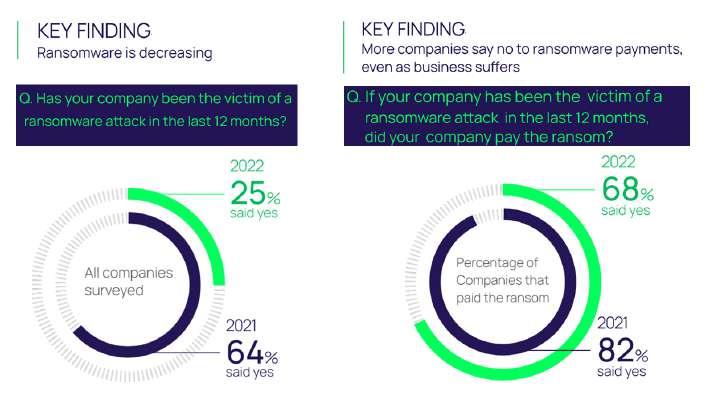
Along with these positive results, the survey
also raised concerns that a potentially reduced threat could lead to complacency. Budget allocations for ransomware are in decline, as only 68% of those surveyed said they are currently allocated budget to protect against ransomware versus 93% during the prior year. The number of companies with Incident Response Plans also declined from 94% to 71%, and only half are taking proactive, proven steps to prevent ransomware attacks such as enforcing password best practices, 51% and using Multi-Factor Authentication, 50%.
The survey also revealed that the consequences of ransomware attacks are now more tangible, as more respondents specified that their companies lost revenue, 56% and customers, 50% compared to the previous year. Fewer organisations, 43% reported reputational damage as a result of being victims of a ransomware attack.


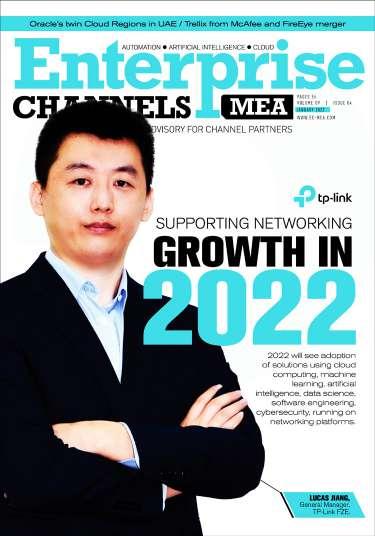
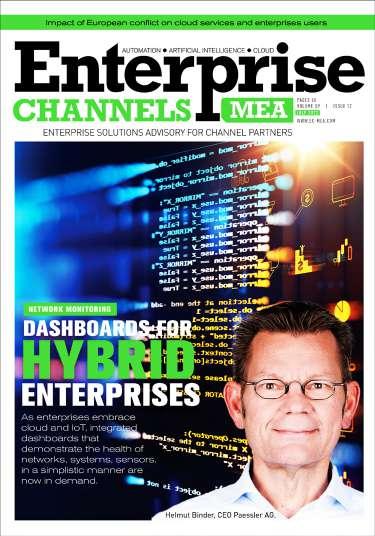



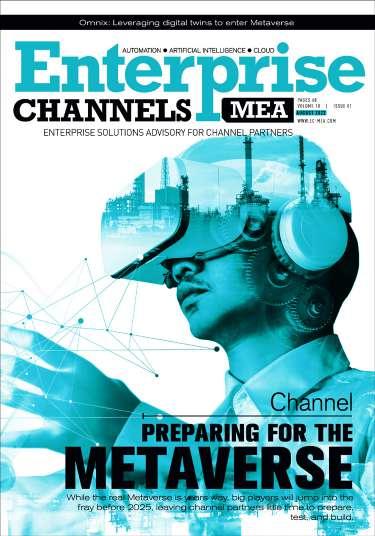




















 ROLA DAGHER
ROLA DAGHER
Aligning market demand with partner opportunity has triggered Dell to launch APEX, an on-demand and as-a-Service IT model, while simplifying the partner programme.
BY ARUN SHANKARell Technologies is a global information technology vendor, with revenues in excess of $100 billion, 155,000+ employees, with one of the widest product and solution portfolios in the industry.
According to a white paper published by global channel analyst Canalys in August 2021, Dell Technologies is also one of the world’s largest channel vendors, with indirect revenue including VMware of $54 billion in the 12 months to May 2021. Only Microsoft sells more through the channel.
In other words, indirect sales through Dell Technologies’ channel partners is in excess of 50% of total sales.
With one of the broadest technology portfolios in the IT industry, spanning client, infrastructure, cybersecurity, cloud and software, Dell’s reach and relevance in the channel is inescapable. For many partners around the world, Dell is their biggest vendor, writes Canalys in its white paper.
Channel partnerships span global systems integrators, cloud service providers, outsourcers, alliance partners and OEMs, as well as resellers and distributors.
“The channel for us is a business that is extremely important. It is an extremely healthy mix that we have and the EMC integration helped us to get over 50%,” says Rola Dagher, Global Channel
Chief at Dell Technologies.
While the channel business or indirect sales is a significant part of Dell Technologies global revenue, the ratio of direct to indirect sales differs across the various product groups including client solution groups, infrastructure solutions group, VMware solutions and rest of the solutions. Direct sales and indirect sales co-exist across the wide span of Dell Technologies’ products and solutions.
While Dell Technologies is globally a significant channel vendor for many partners, the flip side of the question that can be asked, is why is there still a dominant share of direct sales, where the channel does not contribute.
“At the end of the day, we do what is right for our customers and partners. There is a certain part of our business that is direct because that is the requirement of our customers, says Dagher. Typically, this is due to the complexity in terms of the deals.
“For most of our business, we encourage every customer to go through our partners because we rely on our partners to help us deliver on our solutions,” adds Dagher. “When it comes to Infrastructure Solutions Group, we would like all of our partners to take every point of the business through our channel partners.”
While Dell Technologies would prefer sales and delivery indi-
rectly through its channel ecosystem, across all its solution groups, complexity and customer preference within the end user opportunity may influence the movement towards the direct channel.
With the adoption of digital transformation by enterprises globally and regionally, another question that needs to be asked is how is this impacting the relationship between Dell Technologies and its channel partner community?
“We are incredibly committed to all of our partners, not just this year, in every year that we enter. My role as global channel chief is to continue to invest in terms of helping our partners, to enable them, to empower them, so we can basically get out of their way to go and let them make an impact on our customers,” says Dagher.
Dell Technologies is operating in a trillion-dollar market and its objectives are to grow faster in this market as well as win a larger share of the wallet. This requires continuous discussion with its channel partners.
Dagher points out, while Dell Technologies can build amazing boxes, it is up to channel partners to deliver as well. “Dell Technologies is the enabler, and partners in our channel are the transformers in helping us get there,” she adds.
Other than the impact of digital transformation on the business model of channel partners, another looming market inflexion is the normalisation of IT market demand after the pandemic. The panic spending on IT across two years of pandemic is being normalised towards sales and growth numbers that existed prior to the pandemic – normalised to what IT business used to be before the pandemic.
“I don’t think that this part of the world has felt it yet, but in Europe, North America, we are seeing those numbers being normalised to prior to Covid. I would say, welcome to the year of normalisation, remarks Dagher.
Digital transformation has also brought an added level of complexity into the solution that usually involves more than one channel partner getting involved in the deals. Prior to digital transformation, it was sufficient for one channel partner to manage a volume or value deal. But much of that has changed in today’s transforming world.
“While our ecosystem is a huge, now it is an ecosystem of partners working together. We are seeing that ecosystem combining and working together to actually win complex big deals. We are seeing a lot of that, which is great by the way, because gone are the days where it is just one partner,” says Dagher.
In any complex opportunity deal brought to the table by Dell Technologies’ channel partners, the vendor gets extensively involved. This is to ensure that channel partners are empowered and educated – whether it is for training, professional services, or for building the solution.

“What I am seeing, especially in this region as well, is the collaboration between the team is excellent. And the knowledge transfer, to build on the knowledge base economy here in the region is extremely mature. I see it as a two-way win-win for both and the support that our team is providing the partners and the trust that our partners are putting in us, is something to be proud of,” reflects Dagher.
Amongst these market challenges, the objective of Dell Technologies is also to build a lucrative, beneficial incentive programme that could help its channel partners gain more money and profitability by simplifying the way they do business with the vendor.
So, how can Dell Technologies’ channel partners benefit from these
changes in the partner programme?
“Most successful partners take advantage of those programs that we put in front of them to maximise the opportunity, because they go after new acquisition accounts, or new acquisition opportunity, says Dagher.
Since 2020, Dell Technologies has been working on greater internal alignment with channel partners and a unified, global sales structure, according to Canalys. The goal is to drive an acceleration in revenue through much better cooperation with partners.
Dell Technologies has also been working on aligning all major players in its programme including cloud service providers, solution providers and OEM partners. And this initiative includes building one incentive structured program to simplify the way partners go to market with the vendor as well as a combined approach into revenue and training.
The Dell Technologies Partner Programme now refers to the alignment of cloud service providers, solution providers and OEM partner tracks inside programme. This single programme framework provides partners with increased flexibility and choice in go to market with the vendor. Dell Technologies is adapting to market changes by rewarding all sales motions equally to make it easier for partners to engage with the vendor.
With one of the broadest technology portfolios in the IT industry, spanning client, infrastructure, cybersecurity, cloud and software, Dell’s reach and relevance in the channel is inescapable. For many partners around the world, Dell is their biggest vendor. website. Comment source: Vendor channel strategy in focus: Dell Technologies, August 2021, by Canalys.
The new Dell
Another important initiative by Dell Technologies, to make the channel relevant for their customers, is the movement towards as-a-Service, the APEX programme.
According to Canalys, in its August 2021 white paper, APEX is being positioned as underpinning the new Dell, which will drive a re-engineering of the whole organisation, including its ecosystem partnerships. At the same time, Dell is doubling down on key growth opportunities: workplace transformation, edge, IoT, hybrid cloud and infrastructure modernisation.
The importance of channel partners will become greater than ever as technology complexity intensifies, and customers seek technical expertise, integration
skills and managed services.
APEX is the new way of modernising how customers want to consume product and buy product from Dell Technologies, and that is through an on-demand, as-aService cloud environment.

“The portfolio for us is extremely rich and we have actually invested a lot into our partners, because we cannot scale without our partners in that programme,” says Dagher.
The APEX as-a-service model and strategy got expedited because of the pandemic, over the last two years. And every conversation with a customer or a channel partner, is usually about as-a-Service, points out Dagher.
The lead time taken for the launch of the APEX pro-
I would say, welcome to the year of normalisation

APEX channel partners need to be competent to add their value on top
APEX provides on-demand, as-aService cloud environment
Not every partner has the capability to deliver as-a-Service
Not every partner wants to do as-aService as yet
APEX is being positioned as underpinning the new Dell
APEX is modernising how customers want to consume and buy products
While the channel business is a significant part of Dell Technologies’ global revenue, the ratio of direct to indirect differs in the various product groups including client solution groups, infrastructure solutions group, VMware and rest of the solutions.

Source: Vendor channel strategy in focus: Dell Technologies, August 2021, by Canalys.
“We are investing in partners that are ready to invest and are mature enough to provide and deliver as-a-Service as per customer experience expectations,” says Dagher.
Channel partners who are mature enough to participate in the Dell Technologies APEX programme, would typically exhibit the following:
l Be experienced and competent to provide the APEX as-a-Service
l Understand how to build the APEX as-a-Service
l Add their value proposition on top of APEX as-a-Service
gramme was about the quality of the programme and capability of partners, points out Dagher. “It was not about the speed of the programme, how quick can we get it out; it was about the quality of the programme and the quality of our partners that could help deliver on the as-a-Service model,” says Dagher.
There is a healthy mix of channel partners that are ready and have been providing the as-a-service for some time and have the capabilities to do that. On the other hand, there are end users who are comfortable with traditional legacy products.
“My assessment of as-a-Service is, it is a great thing to have. A lot of partners are talking about it, but not every partner has the capability to deliver as-a-Service, nor do they actually want to do the as-aService as yet, says Dagher.
Dell Technologies is investing in this go to market transformation. How channel partners need to change their conversations with their customers and how end customers need to change their way of consumption.
For Dagher, while all the competencies of the channel partner to participate in the APEX programme are important, the real value proposition exists in being able to deliver a white glove approach.
In the APEX programme channel partners and their customers transition from Capex to an Opex model and move to an annual recurring revenue model. If channel partners have done it before then they would know how to build the as-a-Service offerings.
At the end of this transformation, APEX channel partners need to be experienced and competent enough to add their value proposition on top of the APEX as-a-Service cloud stack.
“It is not just about, here you go, I will just take this and then sell it to you. It is more about how much value-added services is added, I call it the white glove service. It is the royalty kind of service that a partner can add into the APEX model, and provide that to customers. That is where you see the maturity in a partner providing these services based on their past experience, past wins, and in the innovation that they bring behind it. We would love to see our partners coming in saying, I am going to do this on top to enhance the way we deliver services and provide value to the customers,” summarises Dagher. ë
Not every partner has the capability to deliver as-a-Service, nor do they actually want to do the as-a-Service as yet
Businesses are transitioning their IT assets to an as-a-Service model, and the APEX programme is an opportunity for channel partners to provide this service to their end customers.
In October 2020, Dell Technologies announced APEX, a portfolio of as-a-service offerings that simplify digital transformation by increasing IT agility and control. And at Dell Technologies World 2021, Dell provided more details about the current and future road map for this strategic portfolio.
Dell introduced APEX Cloud Services to provide instance-based integrated compute, operating systems, storage, and networking resources. APEX’s private cloud services provide dedicated infrastructure on premises or in Equinix locations, while APEX’s hybrid cloud services extend visibility and control to public cloud partners. Under APEX, customers retain control over data, applications, and middleware software running on APEX services.
The cornerstone of these offers is the Dell Technologies APEX Console, which provides a unified view of all parts of the as-a-Service experience. From ordering, deployment, management, and optimisation to growth, the APEX Console captures all steps of the journey. This solution is meant to unify the company’s as-a-service and cloud strategies, technology offerings, and go-to-market efforts.
APEX will help provide a consistent as-a-service experience wherever a company runs its workloads, including on premises, edge locations, and public clouds. APEX envisions Dell’s customers using a unified interface to define and deploy on- demand infrastructure with a few clicks.
The pandemic experience pushed organisations to re-evaluate internal and external processes and invest in areas that will enable faster innovation cycles and improve business resiliency and agility. Digital transformation is the foundational requirement to deliver the agility that businesses need to remain competitive in today’s fast- changing environment.
For organisations, this means relying on their IT organisations to shift from a centre of operations to a centre of innovation. This shift will support new business initiatives with detailed insights so that organisations
can adapt quickly and with precision.
IDC conducted a worldwide survey in May 2021 and asked respondents to describe their organisation’s view on the priority of digital infrastructure resiliency investments over the next two years, as it relates to ensuring the long-term resilience and success of the business.
Of those surveyed, 71% rated digital infrastructure resiliency investments as a priority or a top priority technology investment.
The need for organisations to invest in digital infrastructure is driven by the understanding that today’s IT environments can often be classified as complex, inefficient, and expensive to maintain all of which stifle innovation. One of the key lessons learned from the pandemic was that shifting the focus to outcomes is vital to operational efficiency and success. Organisations are now focused on improving business and operational efficiency to drive better business outcomes and customer satisfaction.
Businesses are looking for better alternatives to managing their IT infrastructure and are ready to invest to meet their business priorities. IDC conducted a survey in February 2021 and 61% of organisations worldwide were interested in shifting to consumption-based as-a-service models for IT investments.
This interest is being driven by an innovation explosion of interconnected applications and data that stretches from edge to core. All of this serves to demonstrate a clear market opportunity and the need for new operating models such as APEX. ë
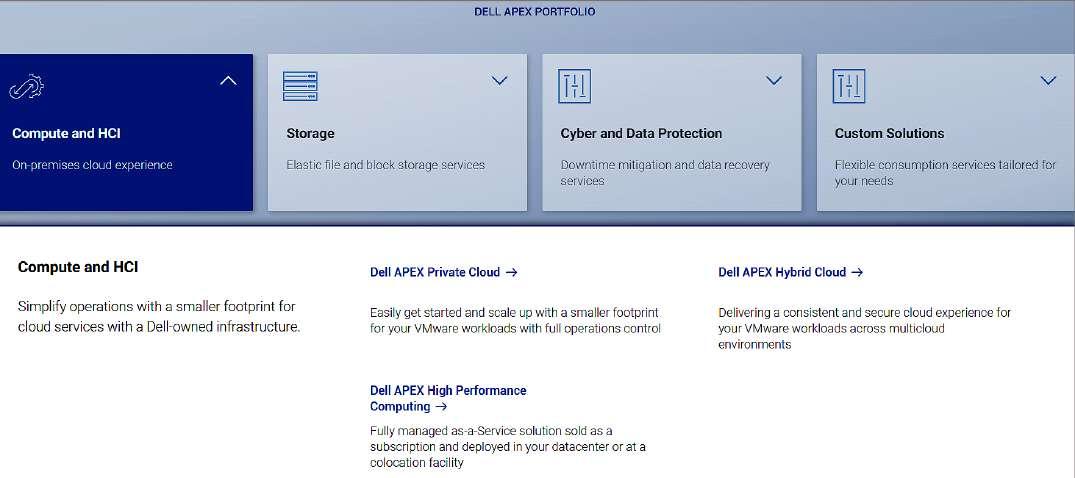



A relook at how to make business gains with analytics as well as beginning the journey of automation to tackle recessionary trends.


The Alteryx platform supports integration with a range of data sources including, databases, cloud applications, big data platforms, business intelligence tools.
Big data is a huge consideration in business today. With more data created each day than ever before, business leaders are looking towards datadriven insights to make disruptionbusting decisions. Decision intelligence combines big data with advanced analytics techniques like AI, machine learning, and natural language processing to deliver the actionable insights those leaders need to make the right decisions, at the right time, at scale, to gain a competitive edge.
It enables organisations to uncover hidden patterns, trends, and insights that would be otherwise impossible to detect. One example of decision intelligence in practice is retailers predicting product popularity in advance and pre-stocking goods.
The Alteryx platform supports integration with a wide range of data sources including, databases, cloud applications, and big data platforms. It can also be integrated with business intelligence tools, visualisation tools, and other third-party analytic options.
Alteryx’s solution partner and ISVs integrations lets users integrate data from different systems, applications, and services. An organisation in the healthcare space, for example, might use Alteryx to connect with their Electronic Health Record system, then blend that data with claims data from their lab results – delivering a holistic view of patient information for clinical decision support, improving care coordination and outcomes.
Businesses are making huge gains with analytics in marketing, supply chain, fraud detection, and risk management among many others. Challenges around data governance, sovereignty, and data literacy, however, are hindering a more widespread adoption of analytics. Integration of many different micro-technologies can also be an analytics pain point. End-to-end simple to use analytic technologies like Alteryx means that different systems can work together seamlessly to provide a holistic whole-business view. ë
VISHAL SONI Technical Product Marketing Manager, Alteryx.
One example of decision intelligence in practice is retailers predicting product popularity
Enterprises need to think about the changes they want to see in the business before applying artificial intelligence to those changes.
The UAE inflation rate is forecast to average 3.2% this year, a considerable dip from its 2022 peak of around 6.8% in the second quarter. While these figures are orders of magnitude less unsettling than those in the US and Europe, the economy is now undeniably global, so UAE business leaders are
not immune to western instability.
Recessions have been a recurring global phenomenon since 2008. In fact, many argue that the trend in digital transformation, both regionally and around the world, was mainly spurred by a do more with less battle cry that echoes to this day. The cloud was seen as a way to shave resource and financial costs by
outsourcing many IT functions and shifting to predictable subscription-style outgoings. Artificial intelligence meanwhile, was seen as a means to tighten up production workflows, and as a tool for upending business models to stand out in a crowded market.
The looming shadows of recessions, plural and a worldwide health crisis are scraping away at the business-intelligence function, eroding resources and manpower and threatening to demote artificial intelligence to luxury status once again. But not for the innovator.
Forward-looking businesses see artificial intelligence as a necessary source of value — the route to market leadership and longevity. This is because they have paid attention to history.
Artificial intelligence took time to prove itself; and prove itself it did. It has a track record of improving efficiency within core operations, and solving real-world problems elegantly. The innovators have already integrated artificial intelligence into their culture and reaping the rewards of everyday artificial intelligence. As far as they are concerned, artificial intelligence is no more superfluous than email.

AI is not a business consultant
Everyday artificial intelligence enterprises think along similar lines. They are the enterprises who grasped the essentials of artificial intelligence — that it was toolbox and not a silver-bullet. By that I mean that everyday artificial intelligence organisations understood that they needed to think about the changes they wanted to see in the business before applying artificial intelligence to those changes.
They knew that artificial intelligence was not a business consultant, so they set themselves the task of identifying the right people and use cases to make artificial intelligence work for their unique operating model.
By collaborating with one another — HR, finance, sales, and the rest — business units ensured that areas that were already highly optimised or that represent too little prospect of value returns were left to tick on by themselves while other processes got more attention.
This is especially important during times of economic instability, when everyday artificial intelligence organisations would never dream of giving up their data insights, which they would see as just as effective a remedy to recession as AC is to a hot summer.
Another lean-times go-to for the everyday artificial intelligence business is training. If data teams are being trimmed or the plans to onboard that MIT-educated data scientist have been shelved, it is fruitful to look inwards.
If a business can find within its ranks those with aptitude and interest in artificial intelligence, they can upskill them. The lack of domain knowledge in artificial intelligence experts is a common project bottleneck.
By training internal domain experts in artificial intelligence, costs are saved in both recruitment and operations. This scenario would have seemed untenable just a decade ago, but today, no-code and low-code artificial intelligence platforms abstract the technical details of solutions development and put the intuitive design of smart systems into the hands of business specialists.
Everyday artificial intelligence companies can navigate rough economic waters more easily. Once business-unit leaders get to grips with the nature of the data that is most relevant to them, they can extract meaningful insights from it to manage supply chains more effectively, optimise product lines, or spot demand spikes and dips ahead of time. Factory floors can finetune quality assurance and marketing teams

comes more quickly. And everything can be led by domain experts who steer the artificial intelligence and review its work to optimise the value it delivers.
The takeaway here is that data teams do not need to be large to add value — artificial intelligence itself can recession-proof the talent pool. Data-science talent is rare and represents a significant portion, if not the lion’s share of the cost of each model and insight.
Recessions are great times to revisit wish lists and weed out the unnecessary in favour of the quick win. One example of an expensive to-do item is data migration, which drains monetary and human resources. The business can continue to generate insights without it, so placing it on hold will not put an end to Everyday artificial intelligence.
can target their messaging in a more granular fashion.
Artificial intelligence not only brings intelligence; it brings automation. Just as low-code automates development, some artificial intelligence platforms can do the work of a junior data scientist, automatically discovering insights and submitting them for review. When recruiting becomes prohibitively expensive, artificial intelligence can solve problems on its own.
This means that each insight is cheaper and
Economic jitters are no reason to drop artificial intelligence completely from a business strategy, especially since it can help do many of the cost-cutting, efficiency-enhancing things enterprises look to do in a recession. While it will not be easy to harvest tangible value at scale during times of talent shortages and slimmed budgets, it is by no means impossible, and if successful, can turn a lean period into a historic turning point for an enterprise.
So, while the natural instinct is to cut, cut and cut during downturns, we should remember that they stop because a few bold innovators start spending again. And while hard times last, there is always a window for gaining an advantage. That is the spirit of everyday artificial intelligence. ë
The takeaway here is that data teams do not need to be large to add value
Shipsy uses a low code, no code technology, so investments in engineering and training are minimal and anyone can plug and play with the solutions.
AI enables businesses to become future-ready. It helps with capacity planning for future delivery requirements, understanding customer preferences, delivery time slots, optimising territory planning to balance freelance vs own fleet. Moreover, it helps gain visibility of incidental charges even before they occur and get insights over CO2 emissions before the shipment journey commences, among other processes.
Predictive analytics empowers logistics enterprises with efficient route planning, inventory management, and capturing KPI-based real-time rider performance for fair incentivisation.
A more profound use case of predictive analytics and automation may help businesses save more money. The tech can analyse customers’ shopping, return patterns to execute highly personalised deliveries. It would be great to see this materialise.
Since big data analytics requires a lot of computing power and storage, cloud-based platforms will continue to grow in adoption.
The global predictive analytics market size was estimated at $11.49Bn in 2021, and it is expected to reach a valuation of $55.5 Bn by 2032. Channel partners know the benefits of predictive analytics, including optimising processes and performance, mitigating risks, gaining a competitive advantage, and more.
Shipsy Business Intelligence is an intuitive do it yourself dashboard that helps businesses reduce complexities and costs by deriving actionable insights and establishing correlations across diverse data points. The platform generates critical insights across multiple use cases, such as first-attempt delivery rates, SLA adherence, driver productivity or attendance, average delivery time, and more, to unearth conclusive insights from a store to an entire organisational level.
The tool quickly identifies the KPIs for each operational task and generates customised reports to share across teams. It empowers businesses to make efficient and quicker data-based decisions, identify the root cause, and share, or validate before executing corrective measures — all within seconds.

Shipsy has integrations across 64+ major shipping lines, 50+ third-party logistics companies, 300+ freight forwarders, 50+ customs agents, and a network of over 20,000 global shippers. Shipsy’s technology is also empowering 100,000+ customer fleets.
Shipsy uses a low code, no code technology, so investments in engineering and training are minimal. Anyone can plug and play Shipsy’s solutions. However, there are dedicated channel managers as well, to ensure in-depth platform training to enhance your domain authority and command. ë
DHRUV AGRAWAL Chief Operating Officer and Co-founder, Shipsy.Shipsy has integrations across 64+ major shipping lines, 50+ third-party logistics companies, 300+ freight forwarders


Predictions from Aruba, detail how retailers will leverage technology to get ahead of customer demands and operational challenges over the next twelve months.

Against an uncertain macro environment, and growing consumer desire for ever more personalised brand treatment, customers are going to be increasingly selective with how and where they spend their money in 2023. As retailers compete for wallet share, they will have to deliver flexible, tailored shopping experiences to attract new footfall and keep both online and in-store customers loyal. This will put a heavy burden on IT teams to support the pace of technological change and deliver the seamless running of operations.
The findings provide a compelling argument for a more flexible and agile network consumption model, like Network-as-as-Service, to help take some of the strain off the network and IT team, allow for greater scalability, and help deliver a more business-outcome focused networking solution.
GERRI HINKEL Director, Solutions and Vertical Marketing, Aruba.As retailers fight to re-engage customers with physical spaces, they will look to invest more in technologies to deepen and differentiate the immersive experience of in-store shopping trips. Expect AR and VR that allows shoppers to get a better feel for how products will fit into their lives before they reach the point of sale to become fully embedded in a retailer’s user experience, UX.
Consumer expectations for on-demand, timeshifted, and location-flexible delivery options are rapidly growing. Retailers and grocers will take an increasingly hybrid approach to fulfilling orders, offering up traditional delivery solutions alongside dark stores, micro-fulfilment centres, grab and go pop-ups, and on-demand couriers. The use of enhanced geolocation services and even mobile stores will give retailers the chance to bring the point of sale directly to the consumer’s home or place of work.
With e-commerce offering ever more sophisticated competition, in-store spaces will be redefined to not only focus on enhanced customer satisfaction and personalisation, but also more efficient business operations. Physical stores will become more connected, with innovations like smart fitting rooms and cashierless exits serving to delight customers, while IoT sensor capabilities provide real-time insights to support operational savings and sustainability ambitions.
In today’s age of instant gratification, consumers expect retailers to deliver what they want, when they want it – with any deviation from what has been promised not tolerated. Expect a surge in automation and predictive technologies to help more accurately track inventory and meet consumer demands in real-time. Smart robots deployed in warehouses and distribution centres will also make operations more intelligent, shifting made-to-order retailing into the mainstream, and reducing waste and excess inventory as a result.
Livestreaming from physical stores will become more commonplace as brands look to create the next stage of showrooming, giving customers a glimpse behind the scenes. Delivering such experiences will help feed consumer appetite for a local touch and allow retailers to make the most of their remaining physical spaces.

Whether it’s immersive experiences, livestreaming, or new delivery methods, the technology requirements for retailers are becoming denser and more complex as they continue to battle for business. And while vital, new and modern technology will be dependent on having the right infrastructure to support It. In the face of continued change, retail companies need predictability and confidence in knowing their network can flex to meet evolving consumer demands and that their IT teams won’t fall under the burden of continued digitisation.
To achieve this, retailers need to reconsider their network approach – looking at alternative consumption models like NaaS to ensure that they not only have the agility to adapt as demands change, but are set up with a highperforming, secure, reliable, and automated network that can support all this technology and leverage real-time insights to facilitate new customer-facing and smart store initiatives.
Expect a surge in automation and predictive technologies to help more accurately track inventory
Retailers will look to invest more in technologies to deepen and differentiate the immersive experience of in-store shopping trips
Read how security solutions are being built around this convergence, expanding to monitor, patch, assess risks on equipment and other threat predictions in 2023.
The Arab Gulf region continues to innovate at scale. But digital transformation in the cloud brings with it a range of issues, including the increased sophistication of attackers and their ability to adapt to the moment at a pace that as yet enterprise security functions have been unable to match.
In 2023, operational technology, OT will see an expansion in its attack surface based on similar exploits that target IT. As OT becomes smarter and its functionality broader, devices and machinery will become increasingly susceptible to vulnerabilities and exploitation. Their constant need for maintenance and update is driving the convergence of OT and IT.
Security solutions are now being built around this convergence, expanding to monitor, patch, and assess risks on manufacturing equipment and critical infrastructure just as they do for desktops and servers. The main difference between running such services for OT as opposed to IT is downtime.
Taking critical machinery offline for patching, rebooting, and installation of updates is no mean feat, but technologists must work with line of business to ensure a process that works so that OT can receive the same protection that IT gets.
In 2023, security leaders will have to battle the first of many exploits that are capable of compromising smart cameras. Imbedded cameras on mobile devices have long been the documenters of personal moments, but lately, they come with technology that can recognise QR codes and enhance pictures.
When users leverage these tools to generate GIFs, Instagram-style boomerangs, and other complex picture and video formats, they leave their devices vulnerable to attack, through malware and exploits embedded in both the content and the applications that render them.
The attacks may not run code directly from the initial point of compromise. Instead, threat actors may obfuscate sensitive information, propagate misinformation, embed malware, or perform some other form of misdirection. QR codes are the first sign that this threat is even possible.
As cameras become more complex, the risk surface is expanding for novel approaches that could lead to their exploitation.
In 2023, look out for a rise in the incidence of ransom-vapourware, where a target is extorted by the threat of publicizing a fictional breach. Because of the willingness of the business community and general public to accept news of a breach, a threat actor can forgo the work of an actual breach, instead relying on a threat to tell the world that such an incident has occurred.
Luckily for the threat actor and unfortunately for the victim, the attack does not need to appear in front-page headlines to inflict reputational damage. Denials will be irrelevant, deemed by the consumer base, and the business and investment communities to be mere PR spin. Cyber-boasters, they are not really attackers can bolster their claims by publishing any data, however easily obtained, as proof, including simple information obtained via open-source intelligence.
This can be especially effective when a named threat actor claims responsibility.
In 2023, more businesses will face the reality that they are not cyberinsurable. The few insurance providers that offer cyber insurance now insist upon a high standard of cybersecurity hygiene before initiating or renewing coverage. In many cases, they insist on policy changes and tool procurement as prerequisites of full coverage.
Without such changes, insured parties would be subject to exemptions based on attack vectors, or invalidated coverage if changes are not satisfactorily implemented. In many cases, these demands of insurers will extend to business partners, suppliers and even customers. Companies must therefore choose between remaining uninsured or shouldering the risks associated with a laundry-list of exception clauses.
In 2023, many countries may ban these venue gimmicks because of the e-waste they represent, perhaps replacing them with apps on phones. Many concert venues give out disposable LED bracelets and offer collect-
able light sticks for purchase. Devices like these receive radio transmissions during the event that make them glow.
Devices are supposed to be low-cost, disposable, and single use, and are therefore the very definition of e-waste. Threat actors, whether in protest of e-waste or for some other reason, can decode devices’ RF transmissions to wreak havoc.
The GCC region is known for its growing compliance landscape. New standards may require security teams to stop asking users to change their passwords periodically as NIST guidelines now suggest that this is unnecessary for standard user accounts without an indicator of compromise. Others disagree, so we may be headed for a collision of viewpoints in some jurisdictions.
In addition, recent guidance in PCI DSS 4 says the mere ownership of a certificate on a
host for multifactor authentication of an asset should not necessarily imply trust of the asset. But because many security professionals consider this best practice, a debate is looming.
The realisation that passwords are a liability in an authentication environment has been around for some time. In 2023, we expect more applications, not just the operating system itself, to start using advanced non-password technologies such as biometrics. Personal accounts are still commonly backed by passwords as the ultimate fallback, but the need to remember, retrieve, and type passwords is going to dwindle rapidly as the technology to reliably recognise us improves.
Currently, we still need passcodes as a fallback when other recognition methods fail, but soon fingerprints, typing styles, or even body rhythms will be reliable enough to eliminate the password. Of course, the prediction of the death
of the password has been predicted before, but one of these years, expect an obituary.
The cloud, while an undeniable boon to many in the region, comes with security risk. In 2023, expect a push for transparency and visibility into the security operations of cloud service providers.
Given the rising share of the cloud in the business operations of enterprises and the daily lives of individuals, we can expect to see loud calls for change. Initiatives like CVE, common vulnerabilities and exposure do not apply to the cloud, leaving cloud customers blind to the risks, and to the date and time when identified vulnerabilities are patched.

Many cloud service providers and softwareas-a-service, SaaS vendors obfuscate their security and operations to protect against threat actors, leaving clients in the dark. This cloud camouflage may be removed in 2023, with transparency of architecture, foundational components, and even discovered vulnerabilities finally extends beyond the SOC and ISO certifications to either a cloud version of CVE or some other reporting mechanism.
We expect positive-zero-trust solutions that manage authentication workflows, and negative-zero-trust solutions that dive in deep when malicious activity is detected, to mature over the next few years and essentially cancel each other out. This unification will take place in parallel with the emergence of complete, end-to-end solutions that cover use cases for both appropriate and inappropriate zero trust behaviour.
Procurement teams should be wary of vendors who promise positive and, or negative intent as these will likely be products that provide either positive zero-trust authentication and behavioural monitoring or closed security models that demonstrate what should happen when a negative zero-trust event occurs.
Such solutions will mimic SOAR, security orchestration, automation, and response, which is zero-trust-enabled and focuses on actions when inappropriate activity is detected.
Our assessments of the year ahead may seem all doom and gloom, but in truth, organisations have many ways of protecting themselves against an incident. With the right blend of skills, tools and strategy, either in house or in collaboration with a trusted partner, businesses can go into 2023 with their eyes open and conduct their affairs with confidence. ë
MOREY HABER Chief Security Officer, BeyondTrust.
Threat actors can forgo the work of an actual breach, instead relying on a threat to tell the world that such an incident has occurred
Cisco executives advise CISOs to keep a focus on core basics and have a closer look at who will authorise ransomware payment amongst other advisories.
Digitisation initiatives have continued to be successful in the Middle East, and with rapid adoption of digital technologies, comes added and growing exposure to risks of cyber-attacks. These attacks are now sophisticated and have the potential to derail the progress and benefits of digitisation.
CISOs of organisations across the region play a significant role in mitigating and navigating these risks to ensure that the right strategic approaches are implemented to safeguard digital assets.
As with last year, ransomware continues to be the main tactical issue and concern facing CISOs. More specifically, the uncertainty around when and how an attack could be launched against the organisation is a constant threat.
CISOs will continue to keep a focus on the core basics to prevent or limit

the impact of an attack, and again have a closer look at how any ransomware payment may or may not be paid and who will authorise payment.
Traditionally CISOs have talked about the importance of improving security awareness which has resulted in the growth of those test phishing emails. There is increased discussion now about the limited impact of this approach.
For the most effective security awareness, culture is key. This means that everyone should see themselves as part of the security team, like the approach that has been taken when approaching the issue of safety in many high-risk industries.
CISOs this year will now be keen to bring about a change to a security culture by making security inclusive, looking to create security champions within the organisation, and finding new methods to communicate the security message.
With hybrid work becoming the norm rather than an exception, not having flexible infrastructure can deter the best talent from joining or staying within an organisation. Overly restrictive security practices, burdensome security with too many friction points, and limitations around what resources and tools can be used can all contribute to this factor.
CISOs do not need that extra worry of being the reason behind that kind of brain drain. So, security will need to focus on supporting the introduction of flexibility and the ease of user experience, such as passwordless or risk-based authentication.
Just when we thought it was safe to go back into the organisation with MFA protecting us, along came methods of attack that rely on pushbased authentication vulnerabilities including:
The barrage of push notifications – multiple successive push notifications to bother a user into accepting a push for a fraudulent login attempt
Push Fatigue – constant MFA means users pay less attention to the details of their login, causing a user to accept a push login without thinking.
In the forthcoming year CISOs will look to update their solutions and introduce new ways to authenticate, along with increased communications to users on the topic.

Cyber insurance or coverage plays an increasingly vital role in risk management strategy in the Middle East. Even though the newest and most rapidly evolving topic, cyber insurance provides financial protection that enables innovation and risk taking in digitisation.
The topic will continue to be in focus this year, with insurers demanding greater attribution – aka the science of identifying the perpetrator of a cybercrime by comparing the evidence gathered from an attack with evidence gathered from earlier attacks that have been attributed to known perpetrators to find similarities.
Greater preparation and crystal-clear clarity of the extent to which attribution has taken place when negotiating contracts will be an essential element for CISOs going forward.
Zero Trust implementations, while being the most secure approach a firm can take, are long journeys that take multiple years for major
enterprises to carry out, so it is vital that they start as they mean to go on.
However, that can be easier said than done in many cases, as the principles within Zero trust fundamentally turn traditional security methods on their head, from protecting from the outside in, guarding your company’s parameter from external threats to protecting from in the inside out, guarding individual assets from all threats, both internal and external. This is particularly challenging for large enterprises with a multitude of different silos, stakeholders and business divisions to consider.
The key to success on a zero-trust journey is to set up the right governance mode with the relevant stakeholders and communicate all changes.
Being a CISO has never been more complex. There are more sophisticated attacks, scarcity of resources, the challenges of communicating effectively with the board, and more demanding, regulatory drivers being implemented rapidly within the region.
With so much to consider, it is vital that CISOs have a clear understanding of the core elements of what they protect. Questions like where is the data?, who is accessing it?, what applications is the organisation using?, where and what is in the cloud? will continue to be asked, with an overarching need to make management of the security function more flexible and simpler for the user.
This visibility will also inevitably help ease quicker decision making and less of an operational overhead when it comes to regulatory compliance. ë
The barrage of push notifications, multiple successive push notifications to bother a user into accepting a push for a fraudulent login attempt
Enterprises will not be in a mood to take shortcuts and will insist on proven experience and quality as well as focus on decisions within the security domain.
Though it is forecasted that there would be a slow turn slipping into a recession mode, in reality the market has been quite resilient in 2022 and barring any pandemic like situation or a cataclysmic escalation in Eastern Europe there is no reason to be downbeat as far as market demands are concerned for 2023.
There is only a continuation of what transpired in the latter half of 2022, that is primarily network and cyber security, AI and augmented learning which is machine assisted. However, generative AI would be a key driver in 2023.
2023 would get more and more cloudier. Accelerated use of cloud computing would seriously threaten almost all computer manufacturers. This has led them to adopt hybrid work models but the on-premises numbers would fall. Analog devices are going to be outdated and digital would be the accepted platform.
Technology rejuvenation would be key on advancement and older types will fade away. Increased emphasis on sustainability would impact devices and platforms not conforming to the accepted green norms.
As far as the UAE market is concerned the market demand would be consistent and not vary considerably. Purchase decision makings would centre around security domain and reinforcing existing infrastructure. Customers would give precedence to companies assisting them to protect DATA. Enterprise players should also need to step up to the fluid needs of the customers and be equipped with resources and knowledge.
Bracing for a tough 2023 as the gurus have led us to assume, IT decisions would depend on quality, resilience and worth. Enterprises will not be in a mood to take shortcuts but will insist on proven experience and quality. It is expected that there will be a huge focus on decisions within the security domain and systems integrators are not sufficiently equipped yet to deal with that.
There is already a huge emphasis on technology motivators and expectations will rise as new technologies comes to fore.
Cloud Box has a focus on security and solution driven services and this would allow us to be of use to Enterprises grappling with the constant challenges of security and ensuring smooth functioning of the respective organisations. This becomes more important if the market experiences tremors and the situation becomes downwardly mobile. Generally, threat actors increase when the going gets tough and being secured takes a critical block off the worry index. l The UAE market place would see a multi-fold increase in security engagements
l Cloud is going to take precedence in 8 out of 10 engagements

l There would be resource challenges and gaps in technology skills would persist
l There will be a consolidation in the market place wherein the smaller less resilient players become redundant and either get absorbed or go out of business. ë
2023 would get more and more cloudier
BIJU UNNI Vice President, Cloud Box Technologies. CLOUD BOXData will help organisations identify where they can or should cut down their emissions, which will help decision-makers resolve sustainability issues.
Businesses across industries are now recognising their digital transformation efforts and looking to further mobilise emerging technologies, including Artificial Intelligence and Machine Learning, for better operational efficiency and overall cost reduction. As enterprises make the digital shift and digital customers grow, there will be exceptional volumes of enterprise data. This will be the case, especially within the telecom, healthcare, retail, manufacturing, insurance, and finance industries.
Moreover, with 5G networks expected to be deployed across the region, this volume of data is bound to increase significantly.
Data contains beneficial insights to make crucial business decisions, with the most innovative and successful organisations identifying data as a strategic resource that requires its own strategy. The primary objectives for top businesses will include digitisation and leveraging the power of data through AI and ML technologies.

AI and ML have already had a substantial influence on many aspects of running a successful organisation. A recent study found that 87% of business decision-makers are achieving success through existing ML programs. These developments are here to stay.
ML can be applied to a growing number of use cases, including customer sentiment analysis, predictive maintenance, vehicle autopilot systems, fraud detection, and chatbots. Even going ahead, AI and ML will invite significant modifications in the global economy, with much of the value potential up for grabs.
In 2023, more and more businesses will work their way towards leveraging technology to create innovative environments for not just their consumers but also their employees through AI and ML.
The tech industry is globally facing challenges around skill shortages, which is hence, impacting the ability of corporations to see through their digital modification projects.
Considering the limited availability of graduates with specialist data skills, having individuals with the right skill set is crucial. This is where AI can help. With AI taking over the regular, time-consuming tasks, employees have more time to cater to the complex tasks that require human intelligence.
In terms of business processes and organisational structures, businesses will invest in upskilling and reskilling programmes to open future growth and development opportunities for potential employees. With AI taking care of mundane tasks, companies will look for employees with irreplaceable or advanced skill sets.
Organisations can now monitor emissions across and analyse carbon offsetting through digital solutions. Cloudera, in a 2022 study, revealed that 81% of knowledge workers believe that AI is a necessity to produce more sustainable business practices that benefit their company as well as the surrounding environment.
For businesses to be fully integrated to monitor, control, and reduce carbon emissions, it is essential for them to be aware of their carbon foot-
KARIM AZAR Regional Vice President Middle East and Turkey, Cloudera.print, which is only possible if they actively gather data. Data will help organisations identify where they can or should cut down their emissions, which will help decision-makers resolve sustainability issues.
Cloudera helps its consumers easily access and analyse all their data. Companies should not have to choose between competing prerogatives such as flexibility and simplicity or performance and cost-efficiency.
That is why the Cloudera Data Platform, CDP has the power to sustain any and all infrastructure: on-premises, as well as public and private clouds.
Cloudera’s new data analytics and data management innovations for hybrid data are specifically created to help organisations manage data at scale across data centres and public clouds, helping make ML and AI business transformation possible. ë
Deep fakes will become so authentic that not only will we see our digital identities being stolen, but also digital versions of our DNA.
The digital world is evolving quickly with Artificial Intelligence and quantum computing expected to soon become a reality. When it comes to cybersecurity, we must always try to determine where we need to be and how to align our security strategy to that possible future.

It is no longer just enough to sit back and wait for these changes to occur, as when we are reactive we immediately fall behind or become extremely vulnerable to the digital threats, which immediately puts business at risk.
With ransomware continuing to adapt with different enhancements and tactics, we must always be dynamic and flexible to change. Attackers are always evolving and looking for ways to gain access.
Yet, while some things change others stay constant. Data privacy and security continue to be a top priority and as the working environment our homes have become an extension of the office. And cloud continues to be an increasingly massive expansion of the threatscape.
Let us take a look at some predictions for 2023.
In 2023, Deep Fakes will become so authentic that not only will we see our digital identities being stolen, but also digital versions of our DNA. Exposing our Digital DNA on the internet will enable Deep Fakes to replicate and create Digital Humans.
It is only a matter of time before attackers can create lifelike digital avatars of anyone, and it will be incredibly difficult to identify the difference without technology to analyse the source data.
Each year the cyber talent gap is increasing. As an industry we must accelerate how to get more new talent and diversity to join the cybersecurity workforce.
2023 will continue to see the workforce gap increase and the urgency to explore new ways to attract more people to choose cybersecurity as the career choice. The old ways of accelerating new talent into the cyber industry must evolve.

And it is no longer just about having core technical skills but rather a diverse set of skills that also include communication, marketing, design, and psychology. Cybersecurity is now a challenge for all societies and, as Mikko Hypponen quoted, we are no longer just protecting systems, but we are now protecting society.
Employees’ homes will become extensions of company offices. Just as Cloud Transformation dominated the pandemic period, we have now started the Bring Your Own Office transformation, where employees’ home networks have become cloud droplets or mini clouds.
The big challenge for organisations today is knowing where the organisation’s security start and stop, and should they be attempting to secure employee homes as an extension of the corporate office.
And what would that mean for the employees’ data privacy? Do we all become always-on employees where we are no longer an employee nine to five?
In the past your personal life and corporate life had a clear separation. With Bring Your Own Device that dynamic changed, and now with Bring Your Own Office it will continue to evolve even further. The boundaries will become even blurrier.
The need to become a cybersecurity society will see an increase in getting the basics right. This means that cyber hygiene and awareness will be a top priority in 2023.
With more organisations looking to obtain cyber insurance as a financial safety net to protect their businesses from serious financial
exposure resulting from data breaches and ransomware attacks, the need to get a cyber strategy in place will be mandated to get insurance. The days of cheap and easy are over.
This means getting back to the basics in 2023 to level up cybersecurity baselines. Ongoing remote work and cloud transformation means that a strong access management strategy will be needed supported by multifactor authentication, password management and continuous verification to reduce the risks.

In addition to implementing better access security controls, employers will need to empower workers with better cybersecurity awareness. This means ongoing training and education to ensure that as threats evolve, employees are informed and ready to be strong defenders in cyber strategies.
Over the past few years, we have seen many countries explore capabilities to go on the cyber offensive. As a result, this will see the introduction of cyber armies.
Many countries have already adopted some variation of a cyber force, whether to support existing armed forces or to defend the country when targeted by cyberattacks, such as what Estonia did as a result of the 2007 cyber-attack. In 2010 Estonia established the Estonian Defence League Cyber Unit which continues to prepare and simulate when a cyberattack targets the country so they are ready to defend the country.
Many other countries have since also established similar units. Now the need to get offensive has now become a reality. The reality is that while many countries may not have traditional weapons, all countries can easily build cyber weapons – and be ready to use them. ë
As an industry we must accelerate how to get more new talent and diversity to join the cybersecurity workforce

Organisations must turn to supply chain solutions to connect systems, take information out of silos into centralised location, making links transparent in real-time.
The current economic climate means that appetite for risk is extremely low. Despite this, businesses know they need to continue to innovate and digitise if they are to survive, and this involves staying at the forefront of technology. In fact, 95% of businesses surveyed for our Industry Insights Report 2022 told us that right-fit technology will accelerate growth for their business.
So, while the global economic outlook remains uncertain, the pace of digital innovation will continue unabated and businesses that prioritise strategic tech investments will increase their chances of success in the year ahead.
Business planning technology solutions have never been more vital. These include solutions that enable forward planning, financial planning
and simulations that give businesses the data they need to make the right decisions in a volatile environment.
Organisations need one source of truth for all their data points, with a digital core that runs through their businesses. Other apps which monitor disparate parts of the businesses should be able to integrate with this digital core, so interoperability of all software solutions will be a key selling point.
Although there is a lot of hype about the potential of predictive analytics, machine learning, ML and artificial intelligence, AI, these solutions cannot offer full value to customers if that one source of truth isn’t already in place.
One of the key pressures technology providers and channel organisations will be under will be to offer project management alongside design
and implementation services. Enterprises simply can’t justify having technology for technology’s sake and can’t risk being burdened by complex solutions that fail to meet expected adoption rates.
The role of channel businesses is to position themselves as consultants, as buyers look for experts to provide validation and confirmation, which de-risks their technology purchases.
While the rise of self-service options such as e-procurement means some customers are bypassing the channel and even vendor salespeople when making technology purchases, this is not a trend we expect to significantly impact the channel’s opportunity for growth, particularly in more complex sectors, such as aerospace, automotive and manufacturing.
Reports show the skilled labour shortage as high as 45% which threatens to withhold success and impede growth across key industries such as manufacturing, distribution, and retail.
Skilled workers, especially the younger generations critical to the future, want to work with the best technology. This is prompting a need for cloud ERP solutions. Cloud ERP creates a dynamic and flexible business environment, where you can quickly respond to disruptions and adapt to changing customer needs. Cloud ERP also enables automation, which can cut down on manual tasks, reduce error rates, and allow you to do more work with less people.
According to Epicor’s 2022 Industry Insights report, 46%of businesses in core sectors are now primarily or entirely in the cloud. Cloud solutions break down departmental silos and can be easily scaled up or down as required for operational efficiency and agility that greatly reduces business latency.
In fact, 90% of those we spoke to last year indicated their move to the cloud was worth the effort, having realised a variety of transformational benefits, including improved flexibility and adaptability, better security, simple regulatory compliance, and enhanced business resilience.
For manufacturers and distributors, a resilient supply chain remains essential for daily operations and long-term success. A disruption can cost an organisation 45% of one year’s profits over the course of a decade, according to McKinsey.
The foundation for a resilient supply chain is advanced digital technology. To overcome their supply chain woes, organisations must turn to supply chain management solutions to connect systems, and take information out of silos and into a centralised location. This will make every link in their chain completely transparent in

real-time, so decision makers can account for every element that affects operations.
Automation has almost unlimited potential in ERP if it is used correctly. But to gain the full benefit, businesses must understand how it can be properly implemented to improve customer interactions. In 2023, we expect an increase in people-centric automation tools, digital work instructions and intelligent integrations, such as Configure-Price-Quote which allows buyers to design a product to their exact specification before purchasing, for an interactive and highly personalised customer experience.
Another good example of automation is eFlex Systems, a provider of cloud-based Manufacturing Execution System, which was recently acquired by Epicor which helps manufacturers to increase productivity by modernising their production environments through digital work instructions, advanced process control, and real-time visibility.
46% businesses in core sectors are now primarily or entirely in the cloud
VIBHU KAPOOR Regional Vice President, Middle East, Africa and India, Epicor.
The road to stronger cyber defences has never been simple, but organisations have a lot to keep in mind for 2023 when it comes to cyber security.

023 is also expected to bring an increase in the number of attackers motivated simply by bragging rights. These actors are often younger and not tied to a nation state or organised group. However, there could still be nation-state activity.
Ransomware has been a staple of Mandiant reports for several years. While it is well-established as part of many threat actors’ toolkits, data shows more of a drop in US incidents and a rise in European incidents. While entities in European regions need to stay especially vigilant, organisations around the world need to be ready for increased attempts at extortion.
Extortion actors will stop at nothing to achieve their goals, even using physical devices and less common types of social engineering. The road to stronger cyber defences has never been simple, especially for security professionals. Organisations have a lot to keep in mind for 2023 when it comes to cyber security.
In 2023 Mandiant forecasts more intrusions conducted by non-organised attackers and non-nation state attackers. More of the threat actors
operating out of North America and Europe will likely be younger, and conducting intrusion operations not because they’re interested in making money specifically, or because governments have tasked them with doing it, but because they want to be able to brag to their friends or boast online that they’ve hacked into and brought embarrassment to prominent organisations.
Due to several high-profile and visible breaches last year, organisations see mitigating brand damage as a much more compelling reason to pay a ransom than regaining access to encrypted systems. Over the next year, the trend shows that criminals rely on extortion, but actual ransomware deployments may decline. Ransomware-as-a-service, RaaS providers will modernise their software to focus on data exfiltration and leak sites for public shaming.
Corporate credential theft continues to be one of the top ways cyber criminals access victims. Furthermore, in 2022, there have been several
examples of attackers finding ways to circumvent multi-factor authentication technologies. Apple, Google and Microsoft have committed to consumer-based password-less resources based on standards from the FIDO Alliance and World Wide Web Consortium.
The initial roll out of these technologies will focus on consumer-grade password-less resources, but CISOs will demand enterprise identity platforms to expand password-less concepts to the enterprise market. Over the next year, organisations should look for enterprise-focused password-less solutions.



Threat actors have shifted from gaining control of an endpoint to gaining access to a user’s credentials and account. A user’s identity within an organisation has become more critical than access to the user’s endpoint. Over the next year, threat actors will find new ways to steal identities from users using a combination of social engineering, commodity information stealers and information gathering from internal data sources post-compromise. They will combine stolen credentials with new techniques to bypass multifactor authentication and abuse Identity and Access Management systems.
Mandiant has already observed threat actors reading security blogs from defenders to learn ways they could be detected. A trend observed in 2022 is expected to increase. Threat actors will continue to study the blogs and research of analysts in the security community to learn offensive tactics and techniques, defensive strategies and how to exploit vulnerabilities. They may discover clever ways to break into organisations, or perhaps learn techniques that were written about in a security post two or three years ago, but that have not really been used in the wild.
More enterprises have relied on cyber insurance to cover their cyber risks over the years as management has become more aware of cyber security risks. However, claims have also skyrocketed, forcing insurance firms to re-evaluate their risk appetite and scale back coverage accordingly. Many firms attempting to renew their cyber insurance or fresh in the market for cyber insurance, may find difficulty obtaining the coverage they desire.
SMS attacks, email attacks and application redirection attacks have already been observed and encountered. Now there is a new model coming, an approach that consists of deceiving victims in the real world. For example, in 2022 there was a campaign in which victims received a receipt for the delivery of packages in their physical mailboxes.
The receipt included a QR code directing them to an identity and credit card number theft site. In 2023, more schemes like this are expected, where the attacker uses everyday physical support to deceive their victims. Fake advertisements, fake USB keys, fake receipts—the possibilities for attackers are endless. Educating employees and the public is the best defence against these types of threats. ë
SANDRA JOYCE Head of Global Intelligence Mandiant. CHARLES CARMAKAL Consulting CTO Mandiant. PHIL VENABLES CISO Google Cloud.Criminals will rely on extortion but actual ransomware deployments may decline
Studies suggest neurodivergent individuals gravitate towards technical roles avoiding managerial positions and those that involve public speaking or customer contact.
When it comes to the cyberthreat actor, 2022 has been a year much like any other. They continued to evolve, to automate more and use more sophisticated methods. Unfortunately, when it comes to cybersecurity, this year, and the previous two stand out. Yes, the region’s security professionals played the usual parallel game of catch-up to the threat actors’ rapid evolution, but changes to their own IT environments have tied SOC’s hands more than usual. They no longer protect simple, on premises environments. The cloud, third-party services, shadow IT, and more plague cybersecurity professionals to an alarming degree. Adapting is the only way to best the attacker, and with the right strategies, skillsets, regulation, and commitment, we can do better.
The region has made some important steps in diversity and inclusion, with most having concentrated on gender and people of determination. In 2023, a significant leap can be made in closing talent gaps if organisations look to neurodiversity. Studies strongly suggest neurodivergent individuals gravitate towards more technical, insular roles, avoiding managerial positions or those that involve public speaking or customer contact.
As soft skills become increasingly important, and skills shortages persist, we must address neurodiversity by training managers to recognise it and support each team member properly. If not, recruiters will have to hire CISOs for their soft skills, but they may lack technical experience, and will also be unfamiliar with the digital environment they inherit.
A recent survey found 44% of UAE-based CISOs still feel their

organisation is at risk of an incident inside the next year, and 47% believe they are ill-equipped to handle it. In 2023, we can expect CISOs’ messages to finally get through and the role to be granted more autonomy, but at a price. Organisations will expect their security leaders to justify expenditure, action, strategy, policy, and more.
Gartner reports that at least half of C-level executives will have cybersecurity risk clauses in their employment contracts by 2026. This is likely true of the UAE as well, as the government continually introduces more guidelines on cybersecurity, such as the federal Personal Data Protection Law, which came into effect in January 2022.
Just as more freedom leads to more responsibility, the reverse can occur. Because of the complexity inherent in post-pandemic IT stacks, SOCs will need more sophisticated tools to keep digital assets, and the people who use them, in check. Hence, more autonomy in spending and decision-making, but also the KPIs that go with it.
Another poll of UAE cybersecurity professionals gave the impression of overwhelmed SOCs, as 57% of respondents decried out-ofdate security models and 54% cited inadequate tools, both in the context of workplace frustration. Threat actors automate, and have become more effective because of it, but the security professionals tasked with stopping them are complaining that they do not have the tools to do so.


Basic endpoint detection and response, EDR is insufficient to dial down the noise and allow SecOps teams to zero in on genuine threats and boost morale. Advanced machine-learningpowered analytics is the answer, and in 2023 it will play a bigger role as highly regulated industries try to address their cybersecurity talent shortages.
The region’s security leaders are well aware of the consequences of supply-chain attacks. Incidents like SolarWinds stand as cautionary tales of the reach and potential damage of this attack method. In the coming year, CISOs must look to the software bill of materials to understand all the elements of the technology stack and their dependencies. Some of these will be deployed and maintained by third parties and can be weak points even for organisations with robust security postures.
The supply chain must now be seen as integral to cybersecurity strategy, and if necessary, enterprises must support their suppliers in reaching higher levels of maturity. The SBOM will be an indispensable tool in understanding
the chain, the gaps that must be plugged, and who must plug them.
Recent research suggests 62% of UAE-based ransomware victims elect to pay up. We now know that paying does not always have the desired effect. Some recoveries, from the tools provided by attackers for this purpose are slow. Others result in missing data. Others do not work at all.
Gartner predicts that by 2025, 30% of countries will enact laws prohibiting ransomware payments. While these moves may seem like a solution, the panic of being operationally crippled may mean that companies pay out anyway, rendering the laws ineffective. Instead, governments should opt for introducing legislation to support, incentivise, and mandate anti-ransomware best practices. Legislation against payments will drive breaches underground and the industry will lose the transparency culture it is fought so hard to engender.
We still see more campaigns against traditional PC architectures than against mobile devices. This is because legacy applications, configurations and devices give more options to attackers than the relatively smaller world of mobile, with its highly regulated app stores and smaller collection of hardware vendors.
But as 5G’s regional adoption accelerates, faster data transfer on mobile devices will make them as attractive to threat actors as to consumers. And private 5G deployments for IoT and other use cases will introduce weak endpoints into otherwise secure ecosystems. ë
PAUL BAIRD CTSO, Qualys.44% of UAE-based CISOs still feel their organisation is at risk of an incident inside the next year and 47% believe they are ill-equipped to handle it
facial authentication solution works with any cameras pre-installed in all laptops, PCs, and tablets today, to capture a user’s face and validate it against a pre-registered face template of the user. The user’s face template is securely stored in the centralised Accops BioAuth server installed in the organisation’s datacentre.
When enabled, Accops BioAuth can continuously monitor the user’s work environment at pre-determined intervals to check for the authorised user’s presence, identity impersonation and shoulder surfing. It locks out the user if any anomaly is detected and the incident is reported to the organisation for audit.
Backed by another patented technology for face liveness detection, Accops BioAuth can identify if the user sitting in front of the device is a living person or is a static photo, recorded video or another user with face mask. The technology avoids sending video file that consumes high bandwidth or asking user to look left, right which is inconvenient for users.
Accops, an Indian-origin provider of remote access products and solutions, has partnered with Centre for Development of Advanced Computing, a premier R&D organisation under Ministry of Electronics & Information Technology, Govt of India, to build and deliver Accops BioAuth, a modern facial authentication solution with continuous user environment monitoring.
The state-of-the-art solution enables enterprises and government organisations to create a trusted work environment on demand and

empower users of critical applications to be securely productive from wherever they are.
Built with the facial recognition technology developed by C-DAC, Accops BioAuth helps highly regulated businesses, such as BFSI, Pharma, BPO KPO, and critical government departments and PSUs, prevent identity impersonation, shoulder surfing, credential sharing and authentication-related cyberattacks. Additionally, it may be useful for educational institutions as a remote proctoring solution.
With an easy-to-integrate attribute, Accops’

Red Hat, announced an expansion of its open solutions publicly available in AWS Marketplace, a digital catalogue with thousands of software listings from independent software vendors that make it easy to find, test, buy, and deploy software that runs on Amazon Web Services.
Furthering Red Hat’s commitment to customer choice and flexibility across the open hybrid cloud, customers can now use committed AWS spend to purchase and run Red Hat offerings directly through AWS Marketplace. This provides customers with an easier path to digital transformation and more efficient operations, while being better able to meet dynamic
market demands.
As enterprises seek to address growing operational complexity and user demands through cloud services, Red Hat continues to add managed services that address an extensive list of hybrid cloud requirements. Today, Red Hat OpenShift Data Science is now generally available and publicly listed in AWS Marketplace. Red Hat OpenShift Data Science, supported on Red Hat OpenShift Service on AWS, ROSA, is a fully-managed cloud service that provides data scientists and developers with a consistent, powerful artificial intelligence and machinelearning, AI, ML platform for building intelligent applications.
And unlike other solutions in the market, the Accops solution can be integrated with any application almost instantly, within a matter of minutes, without having to make any change or upgradation to the application. And its flexible workflow enables the ‘maker-checker process’ for user onboarding possible in any complex organisational structure.
With the spike in the number of cyberattacks over the past year, especially credential thefts, organisations today need a robust passwordless authentication mechanism, underlining need for the facial authentication solution.

datacentre processors, 4th Gen Xeon processors deliver customers a range of features for managing power and performance, making the optimal use of CPU resources to help achieve their sustainability goals.
Unlike any other datacentre processor on the market and already in the hands of customers today, the 4th Gen Xeon family greatly expands on Intel’s purpose-built, workload-first strategy and approach.
When comparing with prior generations, 4th Gen Intel Xeon customers can expect a 2.9×1 average performance per watt efficiency improvement for targeted workloads when utilising built-in accelerators, up to 70-watt2 power savings per CPU in optimised power mode with minimal performance loss, and a 52% to 66% lower, TCO3.
Intel marked one of the most important product launches in company history with the unveiling of 4th Gen Intel Xeon Scalable processors, code-named Sapphire Rapids, the Intel Xeon CPU Max Series, code-named Sapphire Rapids HBM and the Intel Datacentre GPU Max Series, code-named Ponte Vecchio, delivering for its customers a leap in datacentre performance, efficiency, security and new capabilities for AI, the cloud, the network and edge, and the world’s most powerful supercomputers.
Working alongside its customers and partners with 4th Gen Xeon, Intel is delivering differentiated solutions and systems at scale to tackle their biggest computing challenges. Intel’s unique approach to providing purposebuilt, workload-first acceleration and highly optimised software tuned for specific workloads enables the company to deliver the right performance at the right power for optimal overall total cost of ownership.
Additionally, as Intel’s most sustainable
The expansiveness of built-in accelerators included in 4th Gen Xeon means Intel delivers platform-level power savings, lessening the need for additional discrete acceleration and helping our customers achieve their sustainability goals. Additionally, the new Optimized Power Mode can deliver up to 20% socket power savings with a less than 5% performance impact for selected workloads. New innovations in air and liquid cooling reduce total datacentre energy consumption further; and for the manufacturing of 4th Gen Xeon, it’s been built with 90% or more renewable electricity at Intel sites with state-of-the-art water reclamation facilities.
Unilog, expert in the design and management of end-to-end supply chain solutions, the delegate partner of Sensos, originated at Sony, the IoT and sensors champion, launches Ucontrol – an End-to-End Supply-Chain-asa-Service Solution.

Ucontrol solution combines Unilog’s cloud based Logivice system capabilities with iSIM technology. Logivice is a customisable digital supply chain platform designed to provide visibility to all parts of the supply chain with the highest standard of data accuracy. It is focused on user experience and simplifies data delivery, making it easy for you to access your supply chain operations. Joining iSIM
technology powered by Sensos, these capabilities are revolutionising the supply chain industry.
The Ucontrol smart solution analyses events in the supply chain from Original Equipment Manufacturers to Distribution Canters and further to your technicians and end customers. The cloud user-friendly Logivice platform around Ucontrol allows you to set your temperature thresholds and Estimated Time of Arrival, Points of interest on the way of your shipment and tailor your own business logic to the flow, which enables you to receive realtime notifications about events that happened to your goods on the way.
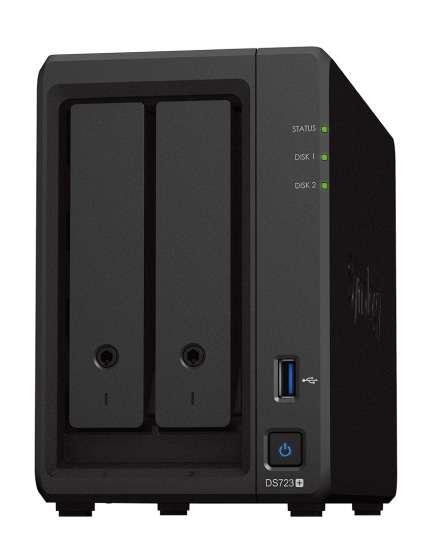
Synology announced the new 2-bay Synology DiskStation DS723+, the smallest expandable option in its line-up of all-in-one solutions for home offices and small businesses.
Powered by the versatile Synology DiskStation Manager operating system, the DS723+ offers comprehensive solutions to protect and manage business data, easily collaborate on documents, access files remotely, and monitor physical assets, all within a compact desktop format.
Ideal for teams of professionals, small businesses looking to step into the world of centralised storage, or as an edge node in distributed
deployments, the DS723+ can scale up to 7 drive bays with a DX517 expansion unit when more capacity is needed.
Users can also upgrade performance thanks to the option to add 10GbE connectivity and M.2 NVMe SSD drives through the builtin PCIe slot to enable fast caching or create additional all-flash storage pools.
The DS723+ delivers intuitive file management and sharing with Synology Drive, which combines cross-platform file access with the privacy offered by on-premises storage. For teams working remotely and businesses operating across multiple locations, site-to-site file syncing is also available to mirror content between Synology devices.
Hybrid cloud capabilities provided by Synology Hybrid Share allow users to merge the benefits of on-premises and cloud by storing cold data in the cloud while keeping frequently accessed files cached on the local device for access at LAN speeds.
Windows and Linux systems, Hyper-V, VMware VMs, and Microsoft 365, Google Workspace accounts can be backed up onto the DS723+ using Synology’s Active Backup Suite, protecting critical or sensitive data against ransomware and other cyberthreats.
For an increased level of protection, users can also create backups and point-in-time snapshots of the data stored on the NAS, which can then be secured offsite on another server or in the cloud.
With support for more than 8,300 validated IP cameras and ONVIF devices, the powerful Synology Surveillance Station VMS can turn the DS723+ to a full-fledged video management system that privately stores footage on site.
Users can quickly set up and manage up to 40 cameras through a modern and customisable interface, and even overlay floor plans or Google Maps, OpenStreetMap maps when monitoring larger or multiple building environments. Simple and effective failover between recording servers, multi-device management, and the option to simultaneously record footage to the Synology C2 cloud boost resiliency and availability of important recordings.

AVEVA, a global leader in industrial software, announced the completion of its acquisition by Schneider Electric. Since its foundation, AVEVA has grown from a niche design software developer to a leading global industrial software company with a value of more than £10bn.
AVEVA’s software drives efficiency and reduces costs for over 20,000 customers worldwide, offering a Digital Twin for the whole asset lifecycle from Engineering through to Operations and Maintenance across diverse industries worldwide.
The global industrial sector increasingly relies on data to maximise business value. But like other materials, this key industrial resource only becomes useful when it is extracted, processed, and delivered to the right people at the right time – securely and in context.
Customers persistently identify the clear need for digital solutions across both industrial operations and energy management, needs that have never been more relevant in the current economic and energy cost environment. Schneider Electric and AVEVA together, enable a holistic approach to digital transformation across a customer’s operations. They drive step-change improvements
Large language models are quickly becoming an essential platform for people to innovate, apply AI to solve big problems, and imagine what’s possible. We announce the general availability of Azure OpenAI Service as part of Microsoft’s continued commitment to democratising AI, and ongoing partnership with OpenAI.
With Azure OpenAI Service now generally available, more businesses can apply for access to the most advanced AI models in the world—including GPT-3.5, Codex, and DALL•E 2—backed by the trusted enterprise-grade capabilities and AI-optimised infrastructure of Microsoft Azure, to create cutting-edge applications. Customers will also be able to access ChatGPT—a fine-tuned version of GPT-3.5 that has been trained and runs inference on Azure AI infrastructure—through Azure OpenAI Service soon.
Azure OpenAI Service was debuted in November 2021 to enable customers to tap into the power of large-scale generative AI models with the enterprise promises customers have come to expect from our Azure cloud and computing infrastructure—security, reliability, compliance, data privacy, and built-in Responsible AI capabilities.

Since then, one of the most exciting things we’ve seen is the
through a reduction in energy, carbon and resource intensity, accelerating customer journeys of efficiency and sustainability.
AVEVA’s strategic focus is on becoming the number one SaaS provider of software and industrial information and evolving to a subscription-only business model. The acquisition will accelerate that transition.
Whilst AVEVA will now be wholly owned and part of Schneider Electric, intentions have been set out to preserve AVEVA’s business autonomy, future R&D investment, and enhancing the potential benefits for customers and meeting their needs faster with a stronger portfolio of solutions.
breadth of use cases Azure OpenAI Service has enabled our customers—from generating content that helps better match shoppers with the right purchases to summarising customer service tickets, freeing up time for employees to focus on more critical tasks.
Darwinbox, announced a collaboration with Microsoft to empower organisations globally and across the MENA with the right tools to succeed in the evolving world of work. The collaboration will include deep integrations between Darwinbox and the Microsoft product ecosystem, and co-innovation on solutions to enhance employee experience. In addition to the co-innovation roadmap, Microsoft has also made an equity investment in Darwinbox to accelerate its mission of empowering organisations to unify their entire employee lifecycle.
The relationship will accelerate joint go-to-market motions in all markets that the leading Human Capital Management player operates in. It will also fuel the global HR tech leader’s growth further while enabling organisations to unlock their workforce’s highest potential.
Darwinbox’s cloud-based HCM platform caters to HR needs across the entire employee lifecycle with new-age employee experiences and disruptive AI-powered technology. Powering 750+ enterprises and 2 million employees across the globe, the company
CommScope, a global leader in home networks, announced entry into the Wi-Fi 7 retail market with the launch of the SURFboard G54 DOCSIS 3.1 quad-band Wi-Fi 7 cable modem.
The flagship SURFboard G54 provides significant performance enhancements, including the latest Wi-Fi 7 technology, and supports multi-gigabit Internet plans. The SURFboard G54 is designed to include other advanced features, including DOCSIS 3.1, quadband Wi-Fi 7, BE17880, or the total speed the system can support, a 10 Gbps Ethernet port, and four 1 Gbps LAN ports.
As the journey to the multi-gigabit network of the future continues, consumers can be ready to support next generation, higher speed internet plans with the SURFboard G54. Coupling the latest DOCSIS 3.1 technology with new Wi-Fi 7 capabilities, the SURFboard G54 provides multi-gigabit speeds, dependent upon service provider plan throughout the home. In addition, a 10 Gbps Ethernet port ensures the home network can support additional Gigabit services directly to the Ethernet connection.
has clocked a 2.6x revenue growth and increased its headcount by 240% in MENA since its Series D Unicorn funding round in January 2022. The company recently opened its new office at Dubai International Financial Centre, DIFC.

Deep integrations and multiple lines of co-innovation between Darwinbox and Microsoft will allow Darwinbox to deliver a radically unique and differentiated value proposition to its customers worldwide. As part of this collaboration, Darwinbox will adopt Microsoft Azure to enhance its Human Capital Management, HCM SaaS platform.

As new smart devices are released and added to the home, the SURFboard G54 ensures that older devices with previous Wi-Fi technology, Wi-Fi 5 and earlier do not degrade the performance of the home network.
The SURFboard G54 DOCSIS 3.1 quad-band Wi-Fi 7 cable modem will be available by mid-2023. Additional Wi-Fi 7 products will become available soon thereafter.
Jayant Paleti, Co-founder, Darwinbox.ways, digital education, and remote physical therapy to musculoskeletal patients recovering from injury or surgery at home. Patients are connected to their care teams via remote monitoring and messaging tools and are routinely prompted to report their progress and complete patient-reported outcomes assessments.
Clinicians use near-real-time status updates to monitor patients’ therapeutic progress and identify at-risk patients in need of intervention, supporting improved outcomes while reducing care variation and costs associated with inperson visits and avoidable readmissions.
Force Therapeutics, announced its availability in AWS Marketplace, a curated digital catalogue that makes it easy for customers to find, buy, consume, and manage third-party software,
services, and data that customers need to build solutions and run their businesses.
Healthcare providers rely on the Force platform to deliver provider-prescribed care path-

Through AWS Marketplace, health systems, physician practices, and ambulatory surgical centres will now be able to enjoy the simplified procurement that AWS Marketplace offers. In addition, current AWS customers can maximise existing investments on AWS and existing enterprise discounts when paying for the Force platform.
Cisco has launched Wi-Fi 6 for small and medium businesses, the latest addition to its portfolio of products purpose-built for smaller enterprises. The offering showcases the best of Cisco’s innovations, reliability, and security, without the complexity required in larger networks.
According to the International Monetary Fund, IMF, SMBs dominate the business landscape in the Middle East and North Africa, MENA region. These enterprises account for more than 90 percent of the region’s businesses and, in some countries, contribute as much as 50 percent of employment and 70 percent of GDP.

To offer SMBs new opportunities through technology, Cisco Business Wireless portfolio enables customers the benefits of upgrading to Wi-Fi 6, which include:
More available throughput, and faster speeds
for devices, enable new applications and customer experiences. 4k video is the norm, from immersive streaming content to social media, and in business collaboration and conferencing tools, enabling face-to-face in the new hybrid world.
In 2022, an average household with two teenagers will own around 50 Internet-connected devices, including many IoT devices, from sensors to smart home appliances, according to Organisation for Economic Cooperation and Development, OECD. Prior to Wi-Fi 6, dense networks were suffering from collisions and consequently, network performance suffered, but that’s now a thing of the past. A secure and reliable solution from Cisco is what business owners depend on to keep the headache out of IT.
Wi-Fi 6 enables greater efficiency through reducing battery burden on the connected Wi-Fi devices. Target Wake Time lets access points schedule when packets are sent to connected clients, and devices can go into low power mode when not being used. Devices can achieve up to 67% improvement.
Application development professionals must evolve both technical and interpersonal skills to keep pace with evolving and emerging technologies.
Core skills like Scrum, Kanban and test-first are essential for agile teams. Knowledge of collaborative development and agile architecture can serve as a value-add. Scaling agile across the enterprise represents the next phase of agile evolution, and software developers can use these skills to fuel it.
Adoption of agile practices is growing amongst software development teams, even in remote-work environments, and developers need specific skills to create better applications, increase delivery speed, improve quality and deliver better user experiences.

Agile software developers face a dizzying pace of change. Application development professionals must evolve both technical and interpersonal skills to keep pace with rapidly evolving and newly emerging technologies. The following skills are fundamental to agile application development. Keep in mind that not every developer needs to be an expert in every area, as agile teams are cross-functional and rely on multiple individuals’ skills.
Scrum
Scrum is the dominant agile framework, providing an iterative and incremental approach for solving complex problems. Small collaborative teams typically deliver work in short iterations, sprints of about two weeks.
Kanban
Kanban is a method for visualising, managing and continually improving
a process’ ability to deliver a service. It is a pull-based delivery flow system that exposes constraints, creates flow by limiting the amount of work in progress and signals when capacity is available to start new work.
Successful application development teams objectively measure and analyse their software development processes. Metrics provide actionable feedback to guide agile teams and enable better conversations with stakeholders.
Product development must become customer-centric, with developers getting closer to their customersBILL HOLZ VP Analyst,

User stories in agile development shift the focus from writing requirements to addressing customer needs. A user story contains a short description of a feature from the perspective of the role desiring the new capability, typically in the format: As a <type of user>, I want <some goal> so that <some reason>.
Product development must become customercentric, with developers getting closer to their customers, understanding their needs and validating success through actionable feedback. Learn to empathise with customers using user personas, customer journey mapping, in-depth interviews and usability testing.
Test-first practices like test-driven and behaviour-driven development ensure that application developers build the right software the first time. With the additional reuse benefits of validation and documentation, creating tests before writing the code provides exceptional value to the development process.
A key tenet of agility is that practitioners be open to learning new skills, not just from project to project, but also as part of a lifelong learning process. Waiting for an expert to perform a critical project step impedes team agility. Multiskilled teams solve problems and achieve goals faster.
These skills represent the next level of agile maturity. In-depth knowledge of them enables the team to continuously improve the delivery process.
In collaborative development, more than one team member works on a single feature or application at any given time. This can benefit teams by providing a built-in mechanism for code review, reducing development cycle time and broadening skill sets as teammates learn from each other.
Work style, attitude and interactions with others impact success as much as any technical or professional skill. Small, self-directed, autonomous teams collaborating to build solutions
only succeed when all members of the team commit to a set of shared values, such as focus, courage, openness, commitment and respect.
Traditional approaches to software architecture do not support an agile development life cycle. Inflexible monolithic applications, architectural complexity and technical debt burden development teams, impede agility and frustrate users. Component-based architectures provide greater development agility, increased deployment flexibility and more process scalability.
These skills represent potentially significant, game-changing processes and practices for agile developers.
Agile teams quickly find that database changes become a constraint that limits velocity. To increase the speed of delivery, cultivate database management skills to become more selfsufficient and reduce dependence on database administrators.

Expanding the validated success of agile pilots to the broader enterprise is both challenging and rewarding for organisations. Agile practices will not only benefit other development teams but also infrastructure and operations, enterprise architecture and security by reducing risk, improving business outcomes and increasing predictability. ë
Gartner.
In collaborative development, more than one team member works on a single feature at any given time
ChatGPT is the perfect storm of two hot topics, chatbots and GPT3 and together, they offer an intriguing method of producing content that sounds amazingly human.
Artificial intelligence, and deployment company OpenAI announced the launch of ChatGPT, a new model for conversational AI. According to OpenAI, the dialogue provided by this platform makes it possible for ChatGPT to answer follow-up questions, admit its mistakes, challenge incorrect premises and reject inappropriate requests.
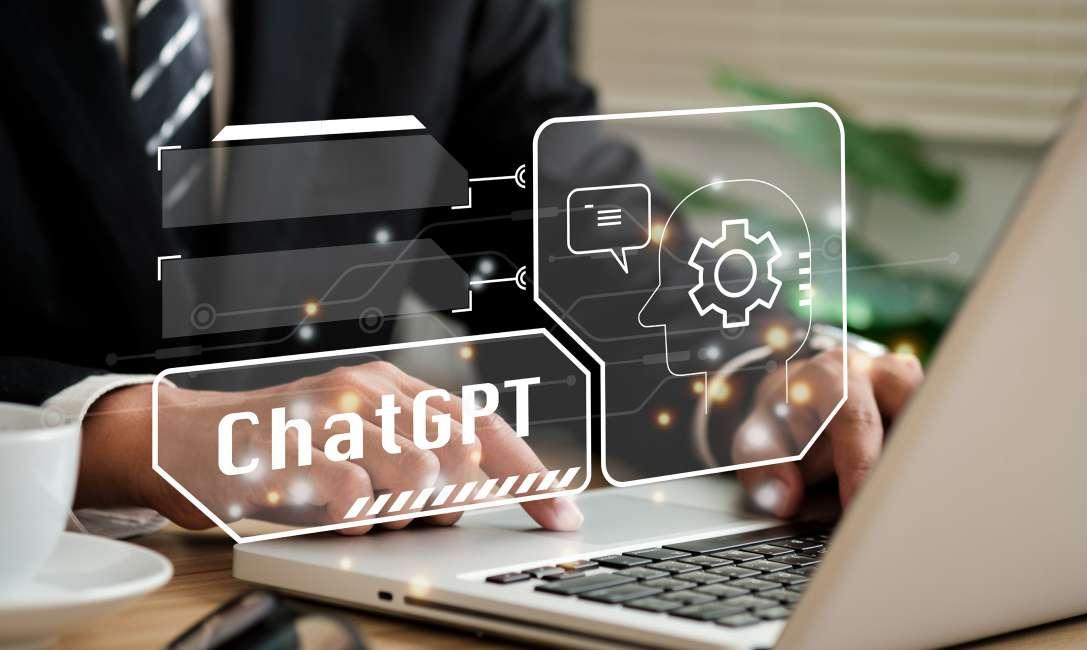
Since its launch, social media has been abuzz with discussions around the possibilities, and dangers, of this new innovation, ranging from its ability to debug code to its potential to write essays for college students.
ChatGPT is the perfect storm of two current hot AI topics: chatbots and GPT3. Together, they offer a wonderfully intriguing method of interacting with and producing content that sounds amazingly human. Each is the result of separate, significant improvements over the last five years in their respective technologies.
Chatbots allow interaction in a seemingly intelligent conversational
manner, while GPT3 produces output that appears to have understood the question, the content and the context. Together this creates an uncanny valley effect of Is it human or is it a computer? Or, is it a humanlike computer? The interaction is sometimes humorous, sometimes profound and sometimes insightful.
Unfortunately, the content is also sometimes incorrect and the content is never based on a human-like understanding or intelligence. The problem may be with the terms understand and intelligent. These are terms loaded with implicitly human meaning, so when they are applied to an algorithm, it can result in severe misunderstandings.
The more useful perspective is to view chatbots and large language models like GPT as potentially useful tools for accomplishing specific tasks, and not as parlour tricks. Success depends on identifying the applications for these technologies that offer meaningful benefits to the organisation.
At a high level, chatbots, or conversational assistants, provide a curated interaction with an information source. Chatbots themselves have many use cases, from customer service to assisting technicians in identifying problems.
At a high level, ChatGPT is a specific chatbot use case where the chatbot is used to interact, chat or converse with a GPT information source. In this case, the GPT information source is trained for a specific domain by OpenAI. The training data used on the model determines the way questions will be answered.
As noted earlier, GPT’s capability to unpredictively generate information that is false means that the information can only be used for situations where errors can be tolerated or corrected. There are numerous use cases for foundation models such as GPT, in domains including computer vision, software engineering and scientific research and development.
AI foundation models such as GPT represent a huge step change in the field of AI. They offer unique benefits, such as massive reductions in the cost and time needed to create a domainspecific model. However, they also pose risks and ethical concerns as below.
Generative Pre-trained Transformer 3 is an autoregressive language model released in 2020 that uses deep learning to produce humanlike text. Given an initial text as prompt, it will produce text that continues the prompt.

The architecture is a decoder-only transformer network with a 2048-token-long context and then-unprecedented size of 175 billion parameters, requiring 800GB to store. The model was trained using generative pre-training; it is trained to predict what the next token is based on previous tokens.
The model demonstrated strong zero-shot and few-shot learning on many tasks. The authors described how language understanding performances in natural language processing were improved in GPT-n through a process of generative pre-training of a language model on a diverse corpus of unlabelled text, followed by discriminative finetuning on each specific task.
This eliminated the need for human supervision and for time-intensive hand-labelling. It is the third-generation language prediction model in the GPT series, successor to GPT-2 created by OpenAI. GPT-3, which was introduced in May 2020, is part of a trend in natural language processing systems of pre-trained language representations. The quality of the text generated by GPT-3 is so high that it can be difficult to determine whether or not it was written by a human, which has both benefits and risks.

Thirty-one OpenAI researchers and engineers presented the original May 28, 2020 paper introducing GPT-3. In their paper, they warned of GPT-3’s potential dangers and called for research to mitigate risk. Microsoft announced on September 22, 2020, that it had licensed exclusive use of GPT-3; others can still use the public API to receive output, but only Microsoft has access to GPT-3’s underlying model.
Source: Wikipedia.
BERN ELLIOTChatGPT is the perfect storm of two current hot AI topics: chatbots and GPT3
l ChatGPT is the perfect storm of two current hot AI topics: chatbots and GPT3.
l Chatbots allow interaction in a seemingly intelligent conversational manner, while GPT3 produces output that appears to have understood the question.
l This creates an uncanny valley effect of Is it human or is it a computer? Or, is it a humanlike computer?
l The interaction is sometimes humorous, sometimes profound and sometimes insightful.
l The perspective is to view chatbots and large language models as potentially useful tools for accomplishing specific tasks.
l Success depends on identifying applications for these technologies that offer meaningful benefits to the organisation.
l Conversational assistants provide a curated interaction with an information source.
l Chatbots themselves have many use cases, from customer service to assisting technicians in identifying problems.
l ChatGPT is a specific chatbot use case where the chatbot is used to interact, chat or converse with a GPT information source.

Large models involve billions, or even trillions, of parameters. These models are impractically large to train for most organisations, because of the necessary compute resources, which can make them expensive and environmentally unfriendly.
These models have been built mainly by the largest technology companies, with huge R&D investments and significant AI talent. This has resulted in a concentration of power in a few large, deep-pocketed entities, which may create a significant imbalance in the future.
Foundation models lower the cost of content creation, which means it becomes easier to create deepfakes that closely resemble the original. This includes everything from voice and video impersonation to fake art, as well as targeted attacks. The serious ethical concerns involved could harm reputations or cause political conflicts.
These models still require careful training and can deliver unacceptable results due to their black-box nature. It is often unclear what factbase models are attributing responses to, which can propagate downstream bias in the datasets. The homogenisation of such models can lead to a single point of failure.
The model is trained on a corpus of created works and it is still unclear what the legal precedent may be for reuse of this content, if it was derived from the intellectual property of others.
To integrate models such as ChatGPT
• Start with natural language processing use cases such as classification, summarisation and text generation for noncustomer-facing scenarios and choose task-specific, pretrained models to avoid expensive customisation and training.
• Use cases where output is reviewed by humans are preferred.
• Create a strategy document that outlines the benefits, risks, opportunities and deployment roadmap for AI foundation models like GPT. This will help determine whether the benefits outweigh the risks for specific use cases.
• Use cloud-based APIs to consume models, and choose the smallest model that will provide the accuracy and performance needed to reduce operational complexity, lower energy consumption and optimise total cost of ownership.
• Prioritise vendors that promote responsible deployment of models by publishing usage guidelines, enforcing those guidelines, documenting known vulnerabilities and weaknesses and proactively disclosing harmful behaviour and misuse scenarios. ë






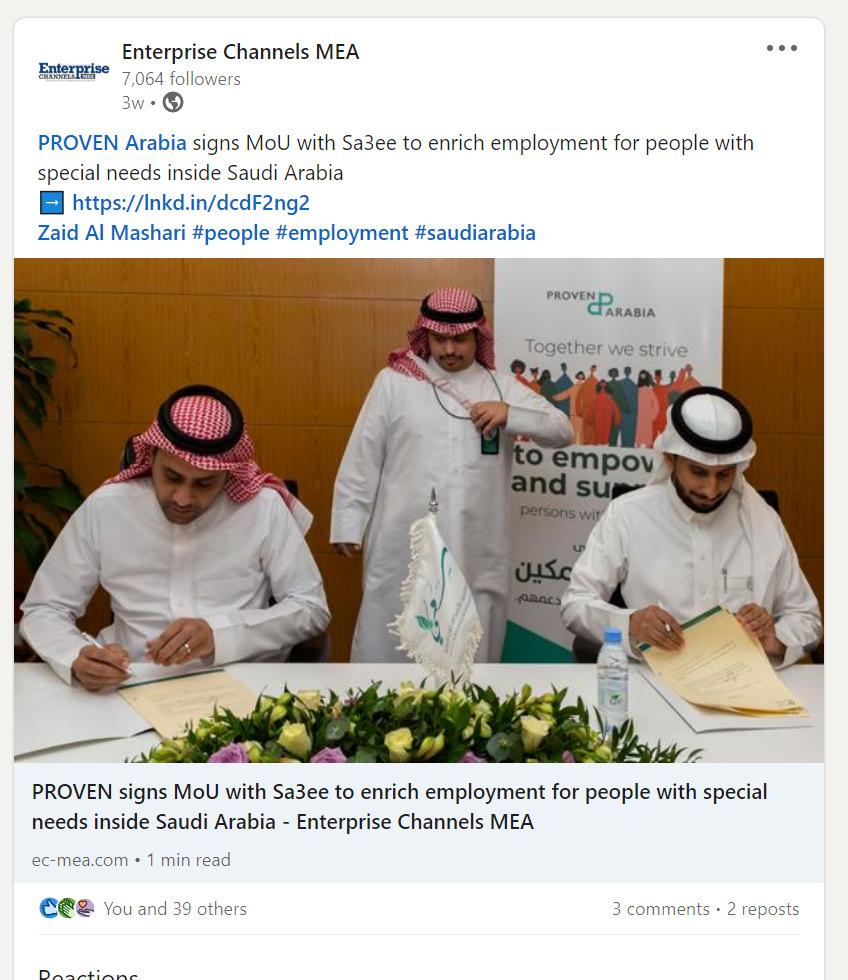

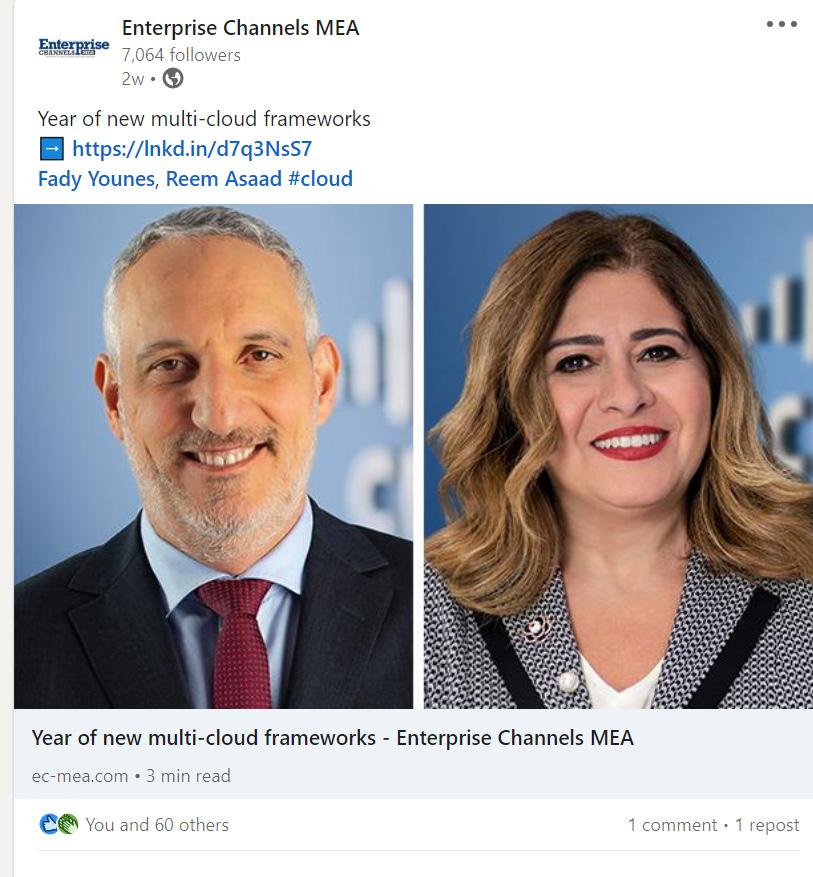


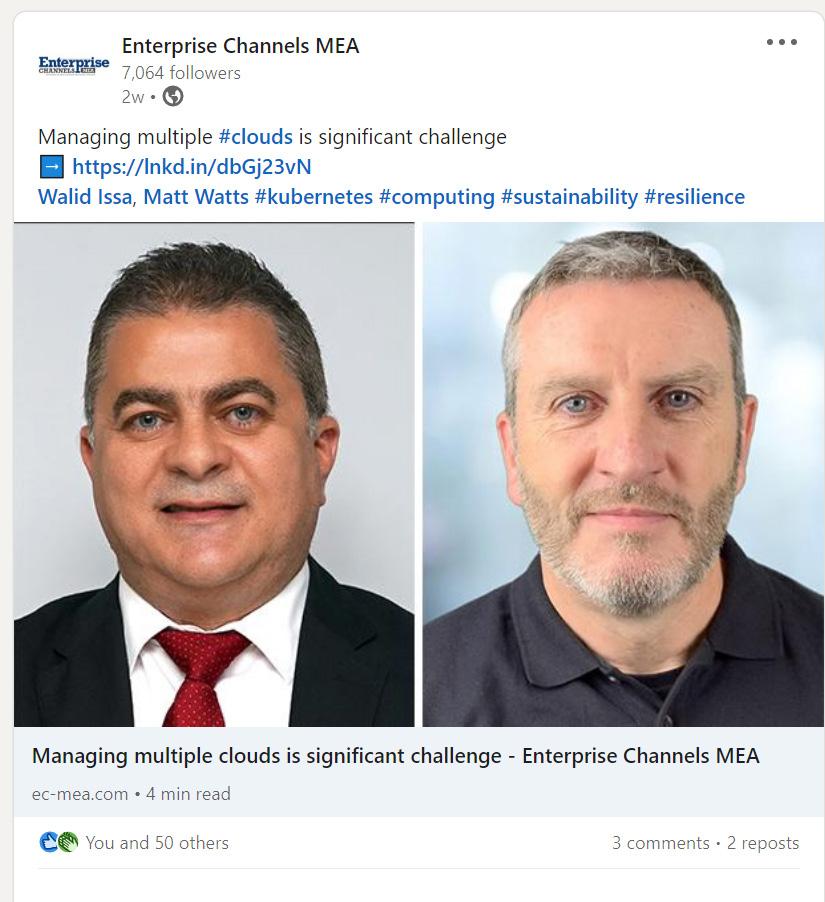








Infoblox Inc, announced that Jesper Andersen has decided to retire as Chief Executive Officer and the Board of Directors has appointed Scott Harrell as the new President and Chief Executive Officer. Andersen will continue to serve on the Board and support Harrell through the transition.
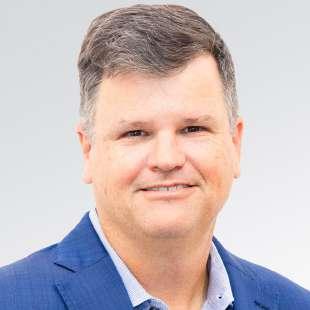
Harrell brings strong executive leadership and portfolio management experience having spent two decades in leadership roles at Cisco Systems and Intel. Prior to joining Infoblox, Harrell was the Senior Vice President and General Manager for Cisco’s $20 billion Intent Based Networking business unit where he oversaw the entire portfolio and engineering teams across the enterprise, IoT and data centre markets. He has an MBA from UNC-Chapel Hill, Kenan-Flaglar Business School, and a bachelor’s in Industrial Engineering from Georgia Institute of Technology.
Vista Equity Partners and Warburg Pincus, Infoblox investors, have thoughtfully selected Harrell as Andersen’s successor. Harrell joins Infoblox at a critical time where more and more enterprises are embracing a remote workforce and multicloud strategies – both of which drastically increase DNS management complexities and security challenges.

F5 announced appointment of Kara Sprague to the newly created role of Chief Product Officer. In this role, Sprague will oversee F5’s entire portfolio of multi-cloud application security and delivery solutions, with a focus on expanding SaaS offerings on the F5 Distributed Cloud Platform and enabling organisations to streamline application security and delivery operations across their complex application environments.

Kyndryl, the world’s largest IT infrastructure services provider, announced appointment of Fionnuala Morris as the company’s Managing Director for Gulf, Levant and Pakistan.
Morris has over 15 years of deep expertise and understanding of the technology industry, the majority of which was in the Middle East. Morris comes to Kyndryl from Microsoft, where she served as Business Group Leader for the Microsoft Surface business unit in the Middle East and Africa, supporting customers to develop and employ hybrid business models during the pandemic and beyond. She also led the end-to-end strategy and execution for the business and oversaw geo-expansion and Go-To-Market efforts.
Sprague joined F5 in 2017 to lead the Application Delivery Controller business. In her most recent role, she served as Executive Vice President, Application Delivery and Enterprise Product Ops, where she was responsible for the BIG-IP and NGINX product families, along with enterprise-wide product operations. Under Sprague’s leadership, F5 rapidly evolved its product portfolio to address the needs of companies running increasingly hybrid and multi-cloud application environments while providing greater flexibility by expanding the ways customers can consume and deploy F5 solutions.
Global security leader Forcepoint announced appointment of three sales leaders in response to global market demand for Data-first SASE security. The company has promoted Myles Bray to Chief Revenue Officer and Thierry Bedos as Senior Vice President of EMEA Sales. It also appointed James McCarthy as Senior Vice President of North America Sales.
In his new role as CRO, Bray has the core mission of enabling businesses to simplify their approach to security, building on Forcepoint’s leadership as a single-vendor provider of SASE. He will report to CEO Manny Rivelo. As the new executive sales leaders for EMEA and North America, respectively, Bedos and McCarthy will report to Bray.

Myles Bray joined Forcepoint in May 2021 as Senior Vice President of EMEA Sales. In that time, he was pivotal in taking to the EMEA market Forcepoint ONE, the company’s all-in-one cloud platform for Security Service Edge (SSE), the security half of SASE. Forcepoint ONE sales have consistently grown exponentially quarter-over-quarter since its Q1 2022 launch. Previously, Bray held executive roles leading sales and channel strategy across Europe, the Middle East and Africa for security companies such as Arqit, F5 Networks and Forescout.

Thierry Bedos joined Forcepoint in April 2022 as Vice President for Southern Europe. During his tenure, Bedos’ hands-on leadership style, customer-first mindset and strategic channel partner relationships helped Southern Europe continue to be one of the most successful regions in EMEA. Prior to Forcepoint, Bedos held senior sales leadership roles at Proofpoint, SAS and McAfee, where he was Managing Director of the company in France for nine years.

James McCarthy brings over 25 years of sales leadership experience to his role as Senior Vice President of North America Sales. Prior to Forcepoint, McCarthy served as the first Head of Sales for Tel Aviv-based tech start-up Cyera. He has also held senior sales leadership roles at companies such as global communications leader BT, IBM Internet Security Systems, and Digital Guardian.

To keep pace with its rapid growth, SimSpace is strengthening its leadership team by tapping James Gerber and Ross Brewer as CFO and EVP. With over 60 years of combined cybersecurity experience, the executive team is well placed to drive growth and support the company’s expansion.
James Gerber, CFO will lead SimSpace’s business and financial operations to support global growth. He brings over 30 years of experience working with institutional investors, publicly listed companies, and capital equity markets. Prior to joining SimSpace, Gerber was the CFO for IronNet, the Pension Benefit Guaranty Corporation, and WorldStrides.
Ross Brewer, EVP of EMEA and APJ, with a track record of advising governments, critical national infrastructure organisations, and public companies in every corner of the world, Brewer will lead SimSpace’s international sales and operations for EMEA and APJ.
 He was previously Vice President of EMEA and APJ for AttackIQ and held sales leadership roles at LogRhythm and Symantec.
Myles Bray as CFO, Thierry Bedos, James McCarthy join Forcepoint as demand surges for SASE
Gerber,
(Left to right) James McCarthy, Senior Vice President of North America Sales; Thierry Bedos to SVP of EMEA Sales and Myles Bray to Chief Revenue Officer Forcepoint.
He was previously Vice President of EMEA and APJ for AttackIQ and held sales leadership roles at LogRhythm and Symantec.
Myles Bray as CFO, Thierry Bedos, James McCarthy join Forcepoint as demand surges for SASE
Gerber,
(Left to right) James McCarthy, Senior Vice President of North America Sales; Thierry Bedos to SVP of EMEA Sales and Myles Bray to Chief Revenue Officer Forcepoint.
TEXUB, the global digital B2B marketplace, having established a significant presence in the Middle East, Asia and Europe, is now expanding in CIS and Central Asia with the appointment of Vitaliy Kanter as the company’s Vice President of Sales for the CIS region. This leadership shift in CIS and Central Asia teams will empower TEXUB to focus on new growth strategies. In this role, Vitaliy will head up its CIS sales and operations, facilitating clients to continue to expand and grow with TEXUB.
TEXUB is aggressively looking to expand its operations across CIS regions and with the appointment of Vitaliy, TEXUB expects to take off its business growth at a fast pace. Vitaliy will be based out of Almaty, Kazakhstan and his key responsibilities include expanding the existing channel network, boost sales, and enhance product and brand visibility. Vitaliy will also work closely with the distributors to expand the presence of TEXUB within the country.
Vitaliy joins on board with a rich experience in B2B industry sales and leadership in CIS markets for over 20 years. He is a proven leader with strong business acumen in pre-empt strategies for sustainable and profitable growth.

Entrust, a global leader in trusted payments, identities, and digital infrastructure, announced that it has named Harini Gokul as its Chief Customer Officer, reporting directly to the CEO.

In this new role, Gokul will lead the organisation’s mission to build and deliver an exceptional Entrust customer experience worldwide, working collaboratively across the organisation. She joins Entrust with more than two decades of experience driving customer success and transformation for customers ranging from Fortune 500 enterprises to start-ups. She is a recognised thought leader in building industry-defining customer experience models and leveraging cloud solutions to help customers accelerate growth and realise value.
Karan Dixit moves from Joget to actyv.ai as Regional VP BD, Sales, GTM, META
actyv.ai, headquartered at Singapore and a category creator in the enterprise SaaS with embedded B2B BNPL and insurance space, has announced the appointment of Karan Dixit as Regional Vice President BD, Sales, GTM, META.

A techno-commercial leader, Karan comes with two decades of experience in IT, research and software – a vast majority of which has been spent within the MEA region. He has a proven track record of launching operations for start-ups in record time. He was instrumental in setting up the EMEA sales function at Joget, Inc.. Prior to this, he established UiPath, the leading RPA player, as Vice President for the MEA region.
Gokul joins Entrust from Amazon Web Services, where she built and led the customer success approach for next generation customers. Prior to joining AWS, Gokul was at Microsoft, where she held multiple leadership roles across product, services, and strategy focused on accelerating cloud adoption and customer success with Fortune 500 customers.
She started her career at Standard Chartered Bank and continued to focus on financial services while consulting at PwC. She holds a Bachelor of Engineering degree from RV College of Engineering and an MBA from Vanderbilt University. Gokul gives back to her community as an elected council member for Medina, Wash., and as a board member for the Washington Technology Industry Association. She is also an active start-up investor and advisor.
As part of the company’s ongoing effort to drive the future of extended detection and response, Trellix announced appointment of Harold Rivas as Chief Information Security Officer. Harold brings more than two decades of cybersecurity experience to Trellix.
Prior to Trellix, he was CISO at loanDepot. His previous positions include CISO and senior information security roles at multiple companies, including Santander Consumer and Fujitsu America. He also led global cybersecurity programs at Citigroup. Harold holds a Bachelor of Science in Business Administration, Master of Business Administration, and maintains multiple industry certifications, including a Certified Information Systems Security Professional (CISSP). Additionally, he is an active public speaker and Federal Bureau of Investigations (FBI) InfraGard member.

Workday, announced appointment of Carl Eschenbach to co-CEO. Carl will remain on the Workday Board of the Directors, which he has been a member of since 2018. Carl will serve as co-CEO alongside Aneel Bhusri, Workday’s co-CEO, co-founder, and chair, through January 2024, Workday’s fiscal year end.
At that time, Aneel and the Board expect that Carl will assume sole CEO responsibilities and Aneel will assume a full-time role as executive chair and will remain as chair of the Board of Directors.
Chano Fernandez has stepped down as co-CEO and as a member of the Workday Board of Directors, effective immediately.
Carl has more than 35 years of experience leading successful technology companies. He has been a partner at Sequoia Capital, a leading venture capital firm, since 2016, having worked closely with high-growth, innovative enterprise software organisations. Carl will stay involved with Sequoia in a venture partner capacity. Prior to Sequoia, Carl held several leadership positions at VMware, a global virtual infrastructure software provider, including as president, chief operating officer, acting chief financial officer, and executive vice president of worldwide field operations, helping the company scale at that time to more than $7 billion in total revenue during his 14 years at the company.
Sophos, a global leader in innovating and delivering cybersecurity as a service, announced that Gerard Allison has joined Sophos as Senior Vice President of Sales for Europe, Middle East and Africa. Allison has more than 30 years of industry experience and is known for his entrepreneurial style and vision, increasing revenue, developing sales programs, training and enablement, building customer and partner engagement, and much more.
Allison joins Sophos from Exclusive Networks. He also previously worked at Gigamon and Juniper Networks. He is based in Essex, UK.

 Harold Rivas moves from loanDepot and joins Trellix as CISO
Harold Rivas moves from loanDepot and joins Trellix as CISO
